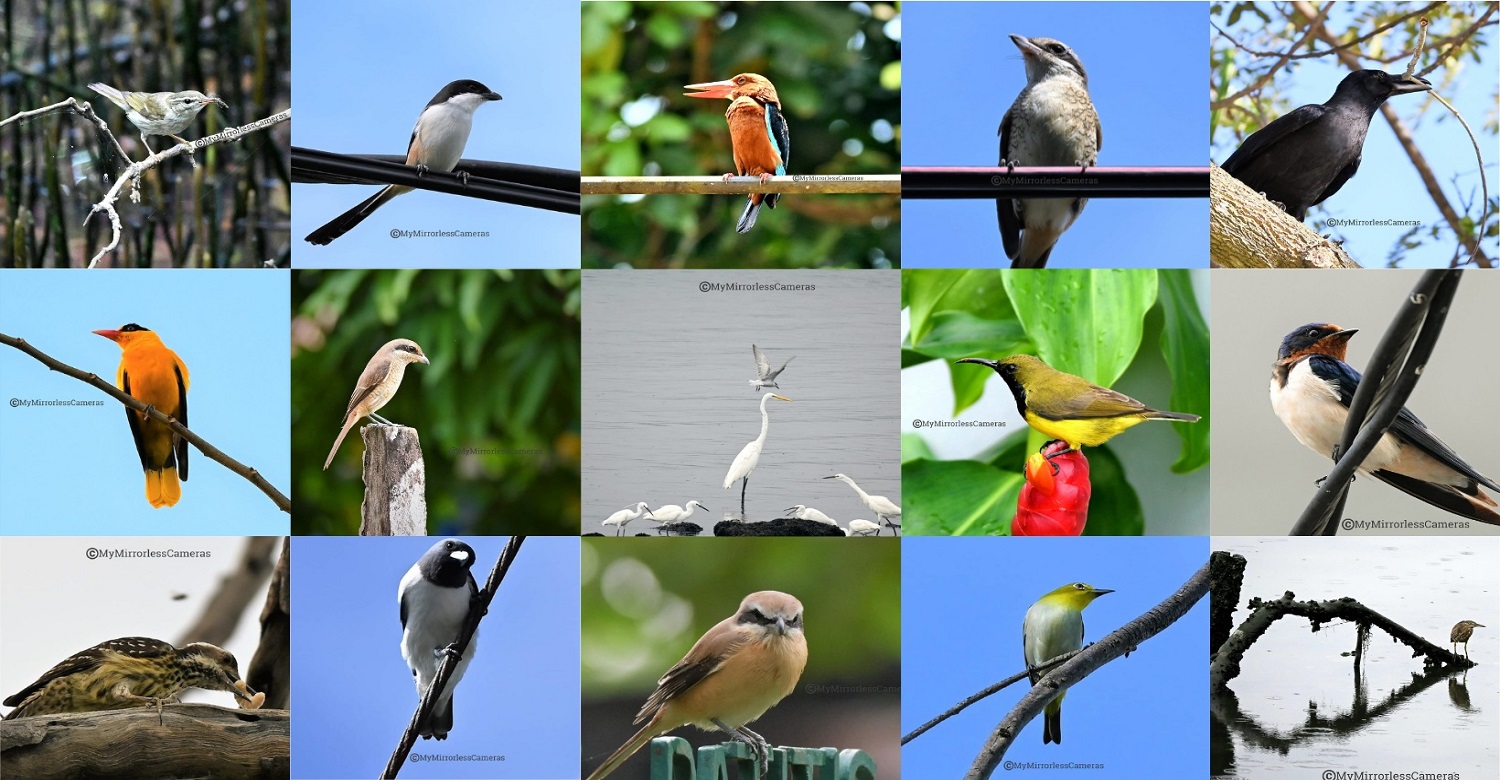
About the Author – Ron’s Personal Bird watching Diary
Hi! I’m Ronnie Medialdea, a photography and bird enthusiast.
I’m trying to document every bird I encounter using my mirrorless camera. Hence, I will be constantly updating this page every time I have captured new and different species of birds!
“Birdwatchers take joy in not only seeing birds but in the entirety of the encounter experience with birds and nature in general.” – this is an excerpt from my son Raymund’s article in The LaSallian (proud father here
)
*Javan Pond Heron (Ardeola speciosa)
Date spotted: July 6, 2022 / Place of sighting: Kalibo, Aklan, Philippines

“Javan Pond Heron”
The Javan Pond Heron (Ardeola speciosa) is a wading bird of the heron family, found in shallow fresh and salt-water wetlands in Southeast Asia.
Its diet comprises insects, fish, and crabs.
Read that the Javan pond heron is typically 45 cm long with white wings, a yellow bill with a black tip, yellow eyes and legs.
Its overall colour is orange, slaty and white during mating season, and brown and flecked with white out of the mating season.
The non-breeding plumage is similar to that of the Chinese and Indian pond herons and is virtually indistinguishable in the field.
It breeds from June to September. It is migratory.
Shot 1/500 sec. f/6.3 600 mm ISO 360 Device NIKON Z50 w/ Sigma 150-600 mm F5-6.3 DG Contemporary Lens
After our vacation in Boracay Island, me and my wife extended our vacation and visited my brother in Kalibo, Aklan. By the way, it’s our home province.
One morning, I went off to a nearby rice field armed with my camera to take a chance to find new bird species.
From afar I saw a lot of white birds flying and landing on a plowed field. I know these are egrets but don’t know what kind.
Took off my slippers and proceeded to the area. Reminiscent of my childhood days, I walked into a muddy rice field to get near to have a decent shot.
I’m surprised to
this migratory wading bird in a plowed rice field, a “Javan Pond Heron”.
A lifer again for me.
*Intermediate Egret (Ardea intermedia)
Date spotted: July 6, 2022 / Place of sighting: Kalibo, Aklan, Philippines
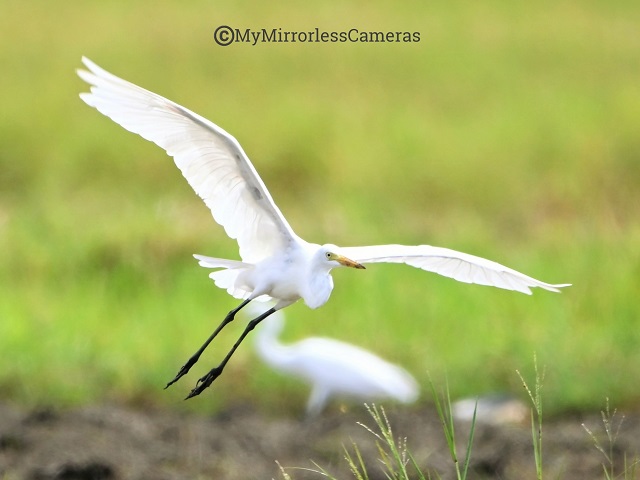
“Intermediate Egret”
The Intermediate Egret, Median Egret, Smaller Egret, or Yellow-billed Egret (Ardea intermedia) is a medium-sized heron.
Read that some taxonomists put the species in the genus Egretta or Mesophoyx.
It is a resident breeder from east Africa across the Indian subcontinent to Southeast Asia and Australia.
Shot 1/500 sec. f/6.3 600 mm ISO 160 Device NIKON Z50 w/ Sigma 150-600 mm F5-6.3 DG Contemporary Lens
As I’ve said, from afar, I saw a lot of white birds flying and landing on a plowed field. I know these are egrets but don’t know what kind.
So, I carefully went near to have a good shots. Identified later as “Intermediate Egret”.
I stayed for a while in the field not minding the scorching heat of the sun. Unfortunately, I forgot to put on sunblock lotion.
Imagine my skin now considering our many activities in Boracay Island for 3 days.
*Paddyfield Pipit or Oriental Pipit (Anthus rufulus)
Date spotted: July 5, 2022 / Place of sighting: Kalibo, Aklan, Philippines

The Paddyfield Pipit or Oriental Pipit (Anthus rufulus) is a small passerine bird in the pipit and wagtail family.
It is a resident (non-migratory) breeder in open scrub, grassland and cultivation in southern Asia east to the Philippines.
Read that although among the few breeding pipits in the Asian region, identification becomes difficult in winter when several other species migrate into the region.
The taxonomy of the species is complex and has undergone considerable changes.
Shot 1/640 sec. f/7.1 600 mm ISO 100 Device NIKON Z50 w/ Sigma 150-600 mm F5-6.3 DG Contemporary Lens
Fortunate to picture this bird during our extended vacation. A lifer again for me.
*Purple Sunbird (Cinnyris asiaticus)
Date spotted: July 5, 2022 / Place of sighting: Kalibo, Aklan, Philippines
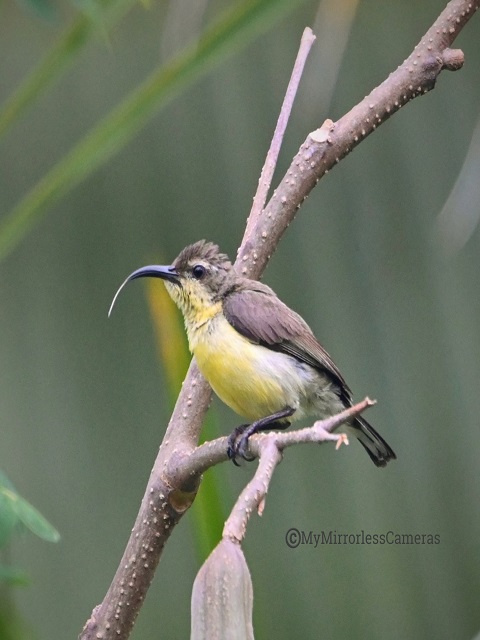
The Purple Sunbird (Cinnyris asiaticus) is a small bird in the sunbird family found mainly in South and Southeast Asia but extending west into parts of the Arabian peninsula.
Read that like other sunbirds they feed mainly on nectar, although they will also take insects, especially when feeding young.
They have a fast and direct flight and can take nectar by hovering like a hummingbird but often perch at the base of flowers.
The males can appear all black in harsh sunlight but the purple iridescence is visible on closer observation or under good light conditions.
Females are olive above and yellowish below.
Shot 1/250 sec. f/6.3 600 mm ISO 2000 Device NIKON Z50 w/ Sigma 150-600 mm F5-6.3 DG Contemporary Lens
One of the bird I found near the home of my elder brother in our home province, a female “Purple Sunbird”
Again, a lifer.
*Black-naped Tern (Sterna sumatrana)
Date spotted: July 2, 2022 / Place of sighting: Boracay Island, Malay, Aklan, Philippines
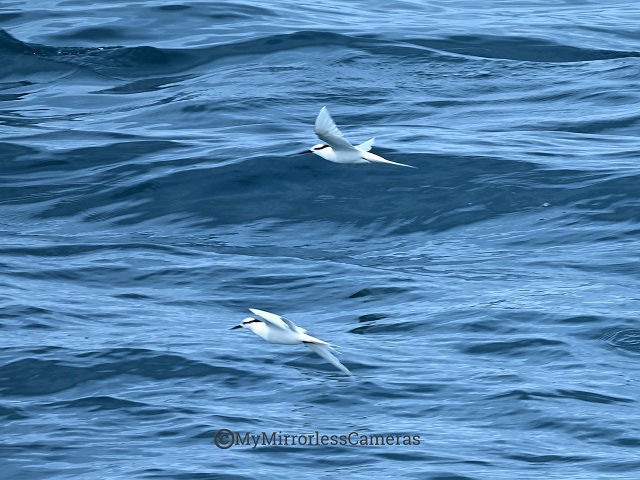
The Black-naped Tern (Sterna sumatrana) is an oceanic tern mostly found in tropical and subtropical areas of the Pacific and Indian Oceans.
It is rarely found inland.
Shot 1/500 sec. f/6.3 250 mm ISO 125 Device NIKON Z50 w/ Sigma 150-600 mm F5-6.3 DG Contemporary Lens
Captured this birds aboard a motorized banca during one of our island hopping activity in Boracay Island.
*Pacific Reef Heron (Egretta sacra)
Date spotted: June 26, 2022 / Place of sighting: Nasugbu, Batangas, Philippines
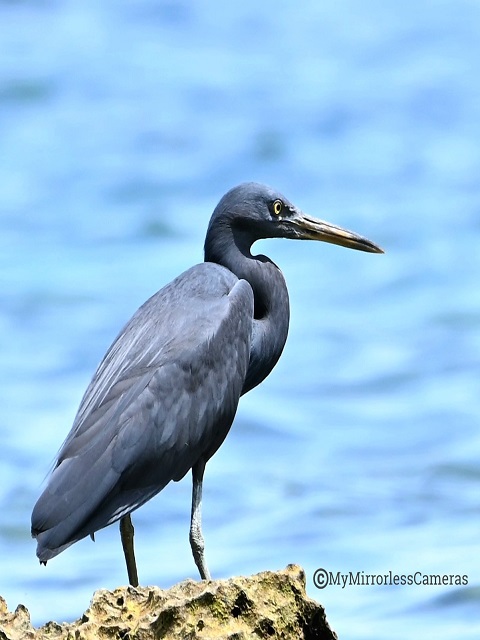
Pacific Reef Heron (Dark morph)
The Pacific Reef Heron (Egretta sacra) also known as the Eastern Reef Heron or Eastern Reef Egret is a species of heron found throughout southern Asia and Oceania.
It is said that the species displays an unusual, non-sexual dimorphism, with some members having entirely white plumage (‘light’ morph) and others (the larger portion) being charcoal-grey (‘dark’ morph).
Read that the reason for the colour variation or “morph”, is unknown, though it is most commonly thought to be related to camouflage.
The plumage of immature herons tends to be browner and duller in colour.
Shot 1/500 sec. f/6.3 600 mm ISO 220 Device NIKON Z50 w/ Sigma 150-600 mm F5-6.3 DG Contemporary Lens
We went on a brief respite one weekend in a nearby secluded beach resort w/ friends.
While conversing with them, someone pointed to me that there’s a bird nearby.
Not sure what kind of bird it is, I grabbed my camera, pointed on it and took some shots.
Unfortunately, I got distracted with our conversation that I didn’t notice it flew away.
First time to see this kind of bird. A #lifer as they say in birding parlance.
*Philippine Bulbul (Hypsipetes philippinus)
Date spotted: June 26, 2022 / Place of sighting: Nasugbu, Batangas, Philippines

“PULANGGANG ILOG”
The Philippine bulbul (Hypsipetes philippinus) is a songbird species in the bulbul family, Pycnonotidae.
It is endemic to the Philippines.
Shot 1/160 sec. f/6.3 600 mm ISO 3200 Device NIKON Z50 w/ Sigma 150-600 mm F5-6.3 DG Contemporary Lens
During our brief respite one weekend in a nearby secluded beach resort w/ friends, I went around near the trees at the back of the beach to spend some time for birding.
Happy to find a fledgling bird, identified later as the Philippine Bulbul. Another #lifer for me.
*Philippine Hanging Parrot (Loriculus philippensis)
Date spotted: May 2, 2022 / Place of sighting: Sta. Cruz, Zambales, Philippines

“KULASISI”
The Philippine Hanging Parrot (Loriculus philippensis) also commonly known as the colasisi.
It is a small psittaculid parrot species.
It is endemic to the Philippines.
Shot 1/250 sec. f/6.3 600 mm ISO 500 Device NIKON Z50 w/ Sigma 150-600 mm F5-6.3 DG Contemporary Lens
*Red Collared Dove (Streptopelia tranquebarica)
Date spotted: May 2, 2022 / Place of sighting: Sta. Cruz, Zambales, Philippines

“TUKMOL”
The Red Collared Dove (Streptopelia tranquebarica) also known as the Red Turtle Dove
It is a small pigeon which is a resident breeding bird in the tropics of Asia.
The male has a blue-grey head and a red-brown body. The female is much plainer, with pale brown plumage similar to that of the larger Eurasian collared dove.
Shot 1/500 sec. f/6.3 600 mm ISO 220 Device NIKON Z50 w/ Sigma 150-600 mm F5-6.3 DG Contemporary Lens
*Common Emerald Dove (Chalcophaps indica)
Date spotted: May 2, 2022 / Place of sighting: Sta. Cruz, Zambales, Philippines
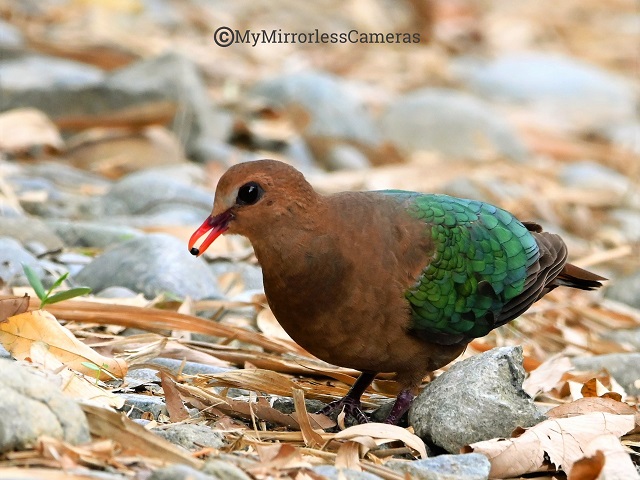
“YALAN”
The Common Emerald Dove (Chalcophaps indica) also called Asian Emerald Dove and Grey-capped Emerald Dove.
It is a widespread resident breeding pigeon native to the tropical and subtropical parts of the Indian Subcontinent and Southeast Asia.
The dove is also known by the names of Green Dove and Green-winged Pigeon.
Shot 1/250 sec. f/6.3 600 mm ISO 1100 Device NIKON Z50 w/ Sigma 150-600 mm F5-6.3 DG Contemporary Lens
*Golden-bellied Gerygone (Gerygone sulphurea)
Date spotted: May 2, 2022 / Place of sighting: Sta. Cruz, Zambales, Philippines
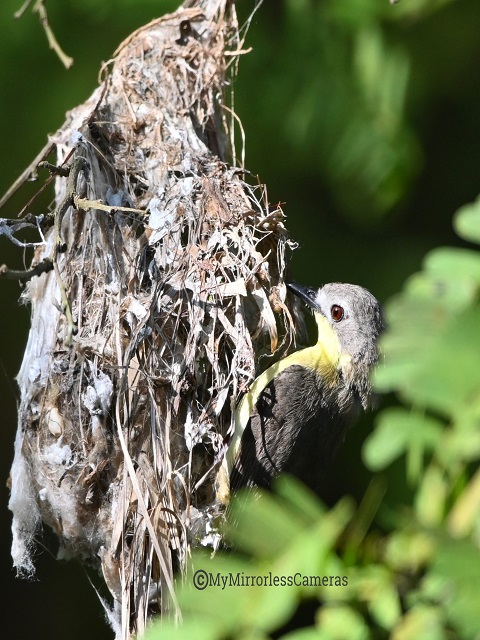
The Golden-bellied Gerygone (Gerygone sulphurea) is a species of bird in the family Acanthizidae.
It said that it is only found in Brunei, Indonesia, Malaysia, the Philippines, Singapore, and Thailand.
Its natural habitats are subtropical or tropical moist lowland forest and subtropical or tropical mangrove forest.
Shot 1/500 sec. f/6.3 600 mm ISO 400 Device NIKON Z50 w/ Sigma 150-600 mm F5-6.3 DG Contemporary Lens
*Lowland White-eye (Zosterops meyeni)
Date spotted: May 2, 2022 / Place of sighting: Sta. Cruz, Zambales, Philippines

The Lowland White-eye (Zosterops meyeni) is a species of bird in the family Zosteropidae.
It is endemic to the northern part of the Philippines and the Taiwanese islands of Lüdao and Lanyu.
Its natural habitat is subtropical or tropical moist lowland forest.
Shot 1/500 sec. f/5.6 150 mm ISO 200 Device NIKON Z50 w/ Sigma 150-600 mm F5-6.3 DG Contemporary Lens
*Brahminy Kite (Haliastur indus)
Date spotted: May 2, 2022 / Place of sighting: Sta. Cruz, Zambales, Philippines
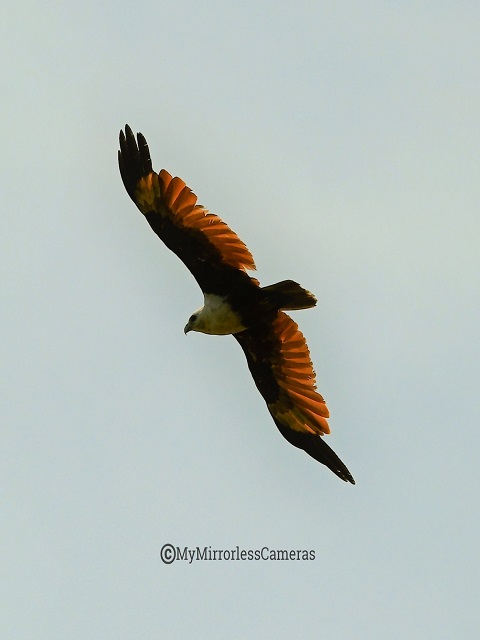
The Brahminy Kite (Haliastur indus) formerly known as the Red-backed Sea-eagle in Australia.
It is a medium-sized bird of prey in the family Accipitridae which also includes many other diurnal raptors such as eagles, buzzards, and harriers.
It is said that they are found mainly on the coast and in inland wetlands where they feed on dead fish and other prey.
Adults have a reddish-brown body plumage contrasting with their white head and breast which make them easy to distinguish from other birds of prey.
Shot 1/1250 sec. f/9 150 mm ISO 100 Device NIKON Z50 w/ Sigma 150-600 mm F5-6.3 DG Contemporary Lens
A rare encounter with this bird of prey. It suddenly appeared above me on an overcast sky. Not ready to take a shot. It’s already far away from me when I took the shot. Forgot to adjust the zoom.
*White-bellied Munia (Lonchura leucogastra)
Date spotted: April 23, 2022 / Place of sighting: Nasugbu, Batangas, Philippines

“MAYANG BATO”
The White-bellied Munia (Lonchura leucogastra) is a species of estrildid finch. It is found in Malesia.
Its natural habitat is subtropical/ tropical lowland moist forest habitat. The status of the species is evaluated as Least Concern.
Shot 1/400 sec. f/6.3 250 mm ISO 400 Device NIKON Z50 Handheld
*White-browed Shama (Copsychus luzoniensis
Date spotted: April 23, 2022 / Place of sighting: Nasugbu, Batangas, Philippines

The White-browed Shama (Copsychus luzoniensis) is a species of bird in the family Muscicapidae.
It is endemic to the Philippines.
The Visayan shama (C. superciliaris), formerly considered a subspecies, was split as a distinct species in 2021. Heard more often than seen.
Song is a pleasant and varied whistled melody, often finishing in a low, descending warbling trill.
Shot 1/80 sec. f/6.3 250 mm ISO 12800 Device NIKON Z50 Handheld
*Black-naped Monarch or Black-naped Blue Flycatcher (Hypothymis azurea)
Date spotted: April 23, 2022 / Place of sighting: Nasugbu, Batangas, Philippines
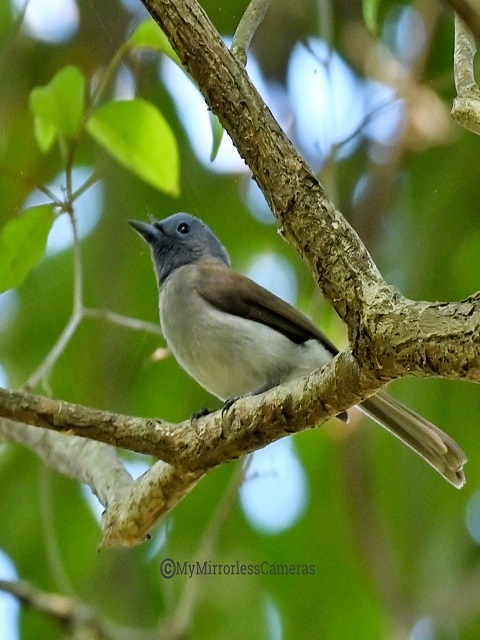
The Black-naped Monarch or Black-naped Blue Flycatcher (Hypothymis azurea) is a slim and agile passerine bird belonging to the family of monarch flycatchers found in southern and south-eastern Asia.
They are sexually dimorphic, with the male having a distinctive black patch on the back of the head and a narrow black half collar (“necklace”), while the female is duller with olive brown wings and lacking the black markings on the head.
They have a call that is similar to that of the Asian paradise flycatcher, and in tropical forest habitats, pairs may join mixed-species foraging flocks.
Populations differ slightly in plumage colour and sizes.
Shot 1/250 sec. f/6.3 250 mm ISO 720 Device NIKON Z50 Handheld
*Hooded Pitta (Pitta sordida)
Date spotted: April 23, 2022 / Place of sighting: Nasugbu, Batangas, Philippines
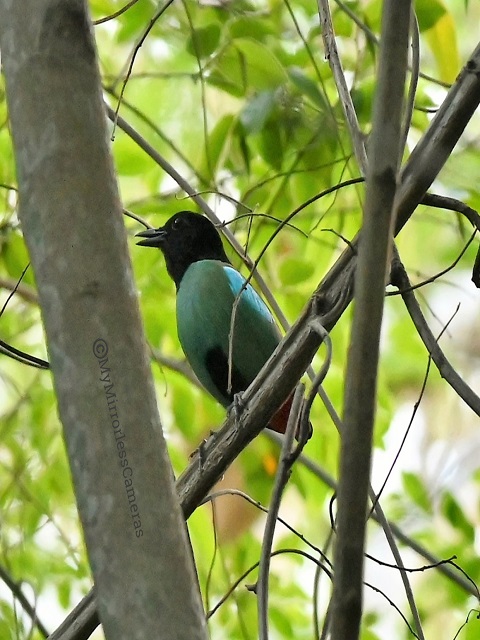
The Hooded Pitta (Pitta sordida) is a passerine bird in the family Pittidae.
It is common in eastern and southeastern Asia and maritime Southeast Asia, where it lives in several types of forests as well as on plantations and other cultivated areas.
It is a green bird with a black head and chestnut crown. It forages on the ground for insects and their larvae, and also eats berries.
It breeds between February and August, the pair being strongly territorial and building their nest on the ground. Incubation and care of the fledglings is done by both parents.
The bird has a wide range, and the International Union for Conservation of Nature has assessed its conservation status as being of “least concern”.
Shot 1/250 sec. f/6.3 250 mm ISO 3200 Device NIKON Z50 Handheld
*Mangrove Blue Flycatcher (Cyornis rufigastra)
Date spotted: April 23, 2022 / Place of sighting: Nasugbu, Batangas, Philippines
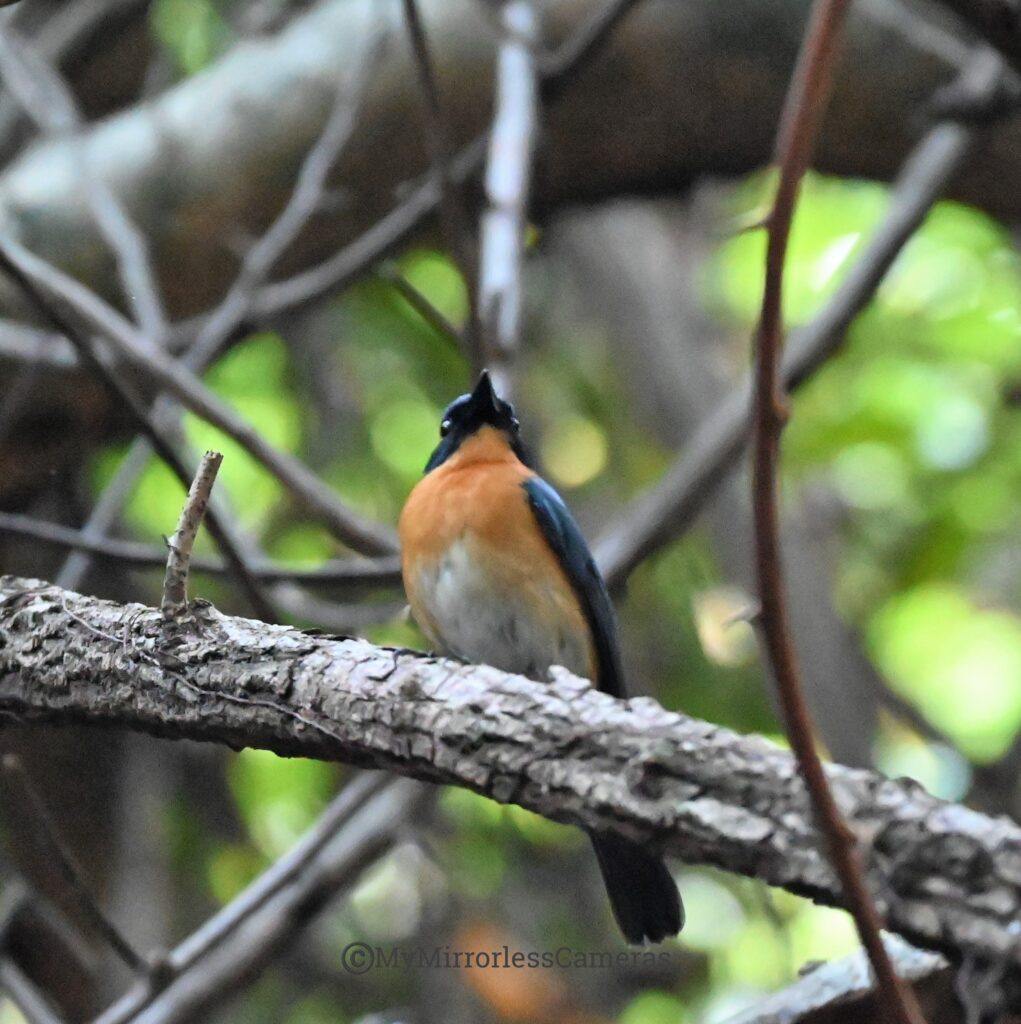
The Mangrove Blue Flycatcher (Cyornis rufigastra) is a species of bird in the family Muscicapidae.
It is native to Brunei, Indonesia, Malaysia, the Philippines, Singapore, and Thailand.
Its natural habitat is subtropical or tropical mangrove forests.
Shot 1/80 sec. f/6.3 250 mm ISO 12800 Device NIKON Z50 Handheld
*Guaiabero (Bolbopsittacus lunulatus)
Date spotted: April 23, 2022 / Place of sighting: Nasugbu, Batangas, Philippines
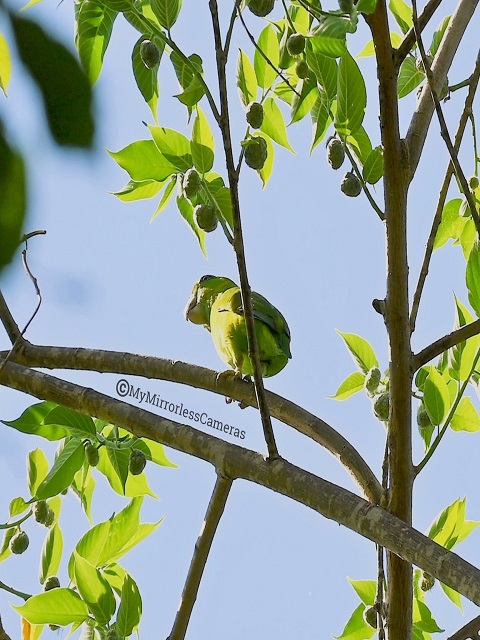
“BUBOTOK”
The Guaiabero (Bolbopsittacus lunulatus) is a species of parrot in the family Psittaculidae, belonging to the monotypic genus Bolbopsittacus and closely related to the lovebirds (Agapornis) and hanging parrots (Loriculus).
It is endemic to the Philippines and locally known as bubutok. Its common name is derived from its reputation for eating guavas.
The Guaiabero, one of the world’s least known parrots, is confined to the Philippine islands of Luzon, Leyte, Samar, Mindanao and Panaon.
Mainly green and only 15 cm in size, the males have blue lores, cheeks, orbital region and chin, and over the upper back there is a thin pale blue band.
Shot 1/160 sec. f/6.3 250 mm ISO 500 Device NIKON Z50 Handheld
*Ijima’s Leaf Warbler (Phylloscopus ijimae)
Date spotted: April 23, 2022 / Place of sighting: Nasugbu, Batangas, Philippines

The Ijima’s Leaf Warbler (Phylloscopus ijimae) (also known as Izu leaf warbler, Ijima’s willow warbler or Ijima’s warbler) is a species of Old World warbler in the family Phylloscopidae.
It is found in Japan, the Philippines, and Taiwan. Its natural habitats are subtropical or tropical dry forests, subtropical or tropical moist lowland forests, and subtropical or tropical moist shrubland.
It is threatened by habitat loss, but is locally abundant in steep and densely wooded areas whose topography makes habitat destruction for development difficult.
Ijima’s leaf warbler is in practice hard to tell apart from the eastern crowned warbler, by physical appearance alone. It has the same dainty and perfectly proportioned features of the typical Phylloscopus warbler.
However, the song – a series of quiet but fairly far-carrying squeaking sounds – is very different from the plaintive, Old World bunting like song of the eastern crowned.
Shot 1/250 sec. f/6.3 250 mm ISO 800 Device NIKON Z50 Handheld
*Cattle Egret (Bubulcus ibis)
Date spotted: April 15, 2022 / Place of sighting: Georgia Club, Nuvali, Sta. Rosa City, Laguna, Philippines
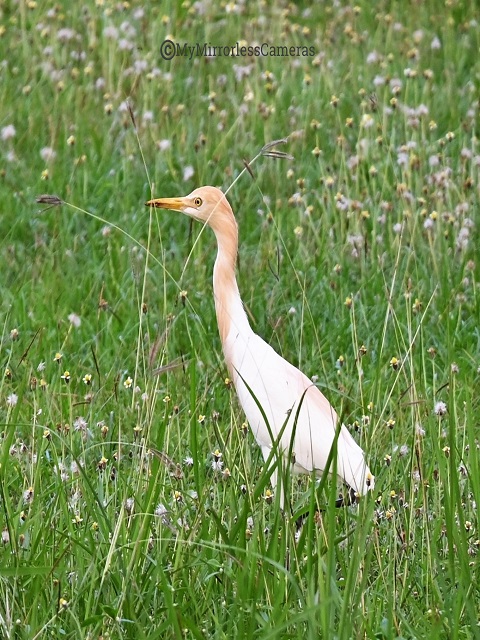
“BAKAW” “TAGAK”
The Cattle Egret (Bubulcus ibis) is a cosmopolitan species of heron (family Ardeidae) found in the tropics, subtropics, and warm-temperate zones.
It is the only member of the monotypic genus Bubulcus, although some authorities regard its two subspecies as full species, the western cattle egret and the eastern cattle egret.
Despite the similarities in plumage to the egrets of the genus Egretta, it is more closely related to the herons of Ardea.
Originally native to parts of Asia, Africa, and Europe, it has undergone a rapid expansion in its distribution and successfully colonised much of the rest of the world in the last century.
Shot 1/250 sec. f/6.3 250 mm ISO 500 Device NIKON Z50 Handheld
*Black-naped Oriole (Oriolus chinensis)
Date spotted: February 27, 2022 / Place of sighting: Nuvali, Sta. Rosa City, Laguna, Philippines
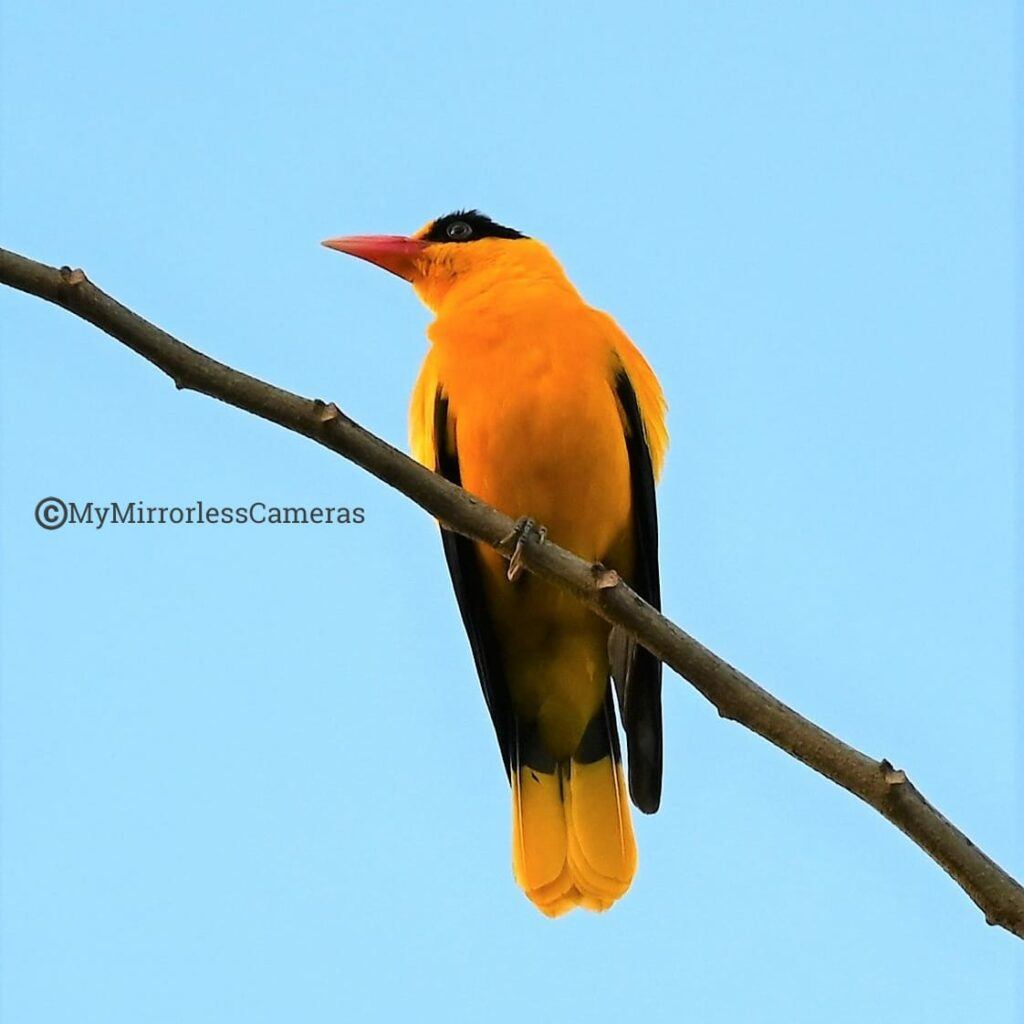
“KILYAWAN”
The Black-naped Oriole (Oriolus chinensis) is a passerine bird in the oriole family that is found in many parts of Asia.
There are several distinctive populations within the wide distribution range of this species and in the past the slender-billed oriole (Oriolus tenuirostris) was included as a subspecies.
Unlike the Indian golden oriole which only has a short and narrow eye-stripe, the black-naped oriole has the stripe broadening and joining at the back of the neck.
Males and females are very similar although the wing lining of the female is more greenish. The bill is pink and is stouter than in the golden oriole.
Shot 1/400 sec. f/6.3 250 mm ISO 400 Device NIKON Z50 Handheld
*Large-billed Crow (Corvus macrorhynchos)
Date spotted: February 27, 2022 / Place of sighting: Nuvali, Sta. Rosa City, Laguna, Philippines

“UWAK”
The Large-billed Crow (Corvus macrorhynchos) formerly referred to widely as the jungle crow, is a widespread Asian species of crow.
It is very adaptable and is able to survive on a wide range of food sources, making it capable of colonizing new areas, due to which it is often considered a nuisance, especially on islands.
It has a large bill, which is the source of its scientific name macrorhynchos (Ancient Greek for “large beak”) and it is sometimes known by the common name thick-billed crow. It can also be mistaken for a common raven.
Johann Georg Wagler first described the species from a holotype obtained from Java in the year 1827.
The eastern jungle crow and Indian jungle crow were once considered conspecific and together called the jungle crow.
Shot 1/250 sec. f/6.3 250 mm ISO 560 Device NIKON Z50 Handheld
*Striated Grassbird (Megalurus palustris)
Date spotted: February 27, 2022 / Place of sighting: Nuvali, Sta. Rosa City, Laguna, Philippines
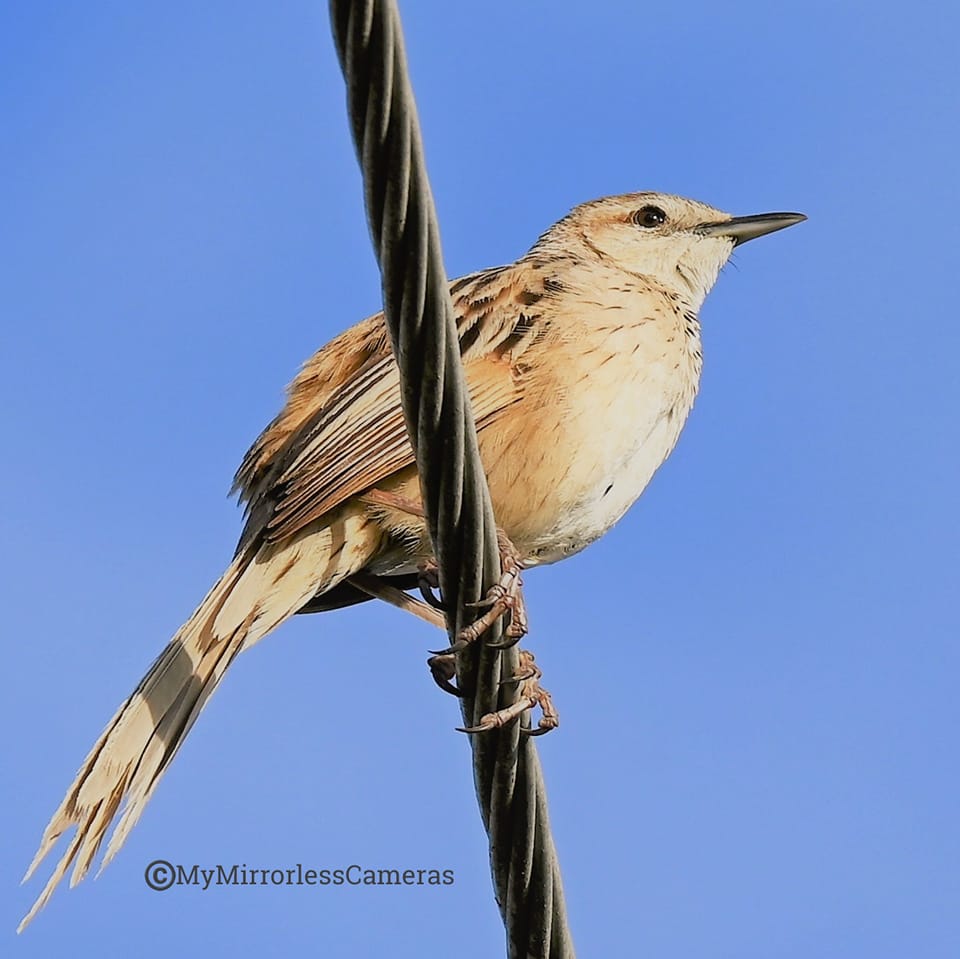
“TUTORIYOK” “TIBSOK”
The Striated Grassbird (Megalurus palustris) is an “Old World warbler” species in the family Locustellidae.
It was formerly placed in the family Sylviidae. It is now the only species placed in the genus Megalurus.
It is found in Bangladesh, Cambodia, China, India, Indonesia, Laos, Malaysia, Myanmar, Nepal,Pakistan, Philippines, Thailand, and Vietnam.
Noisy and conspicuous, often sitting and calling exposed on tops of grasses, bushes and telephone wires. Note streaked crown and streaked upper breast.
Shot 1/500 sec. f/6.3 250 mm ISO 140 Device NIKON Z50 Handheld
*Scaly-breasted Munia or Spotted Munia (Lonchura punctulata)
Date spotted: February 27, 2022 / Place of sighting: Nuvali, Sta. Rosa City, Laguna, Philippines
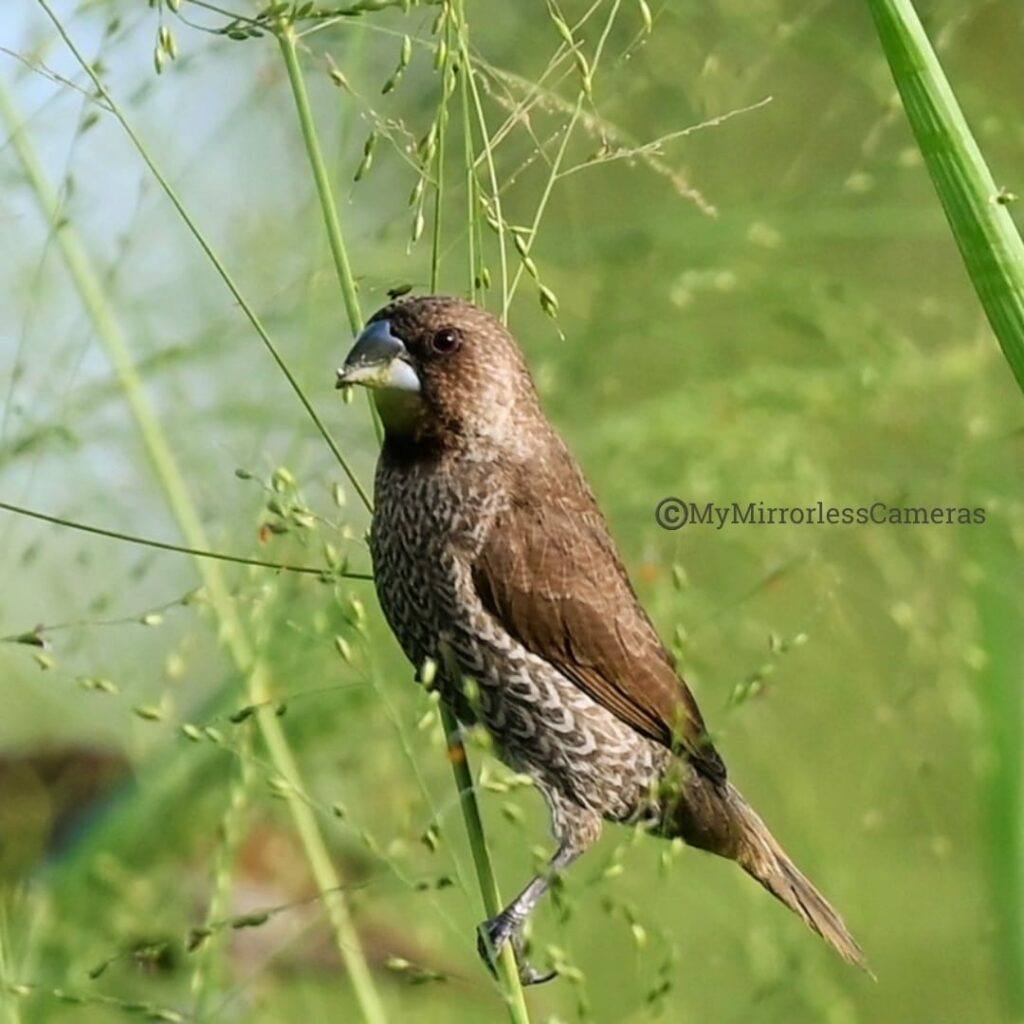
“MAYANG PAKING”
The Scaly-breasted Munia or Spotted Munia (Lonchura punctulata) known in the pet trade as nutmeg mannikin or spice finch, is a sparrow-sized estrildid finch native to tropical Asia.
A species of the genus Lonchura, it was formally described and named by Carl Linnaeus in 1758. Its name is based on the distinct scale-like feather markings on the breast and belly.
The adult is brown above and has a dark conical bill. The species has 11 subspecies across its range, which differ slightly in size and color.
Shot 1/500 sec. f/6.3 250 mm ISO 280 Device NIKON Z50 Handheld
*(Adult) Asian Glossy Starling (Aplonis panayensis)
Date spotted: February 27, 2022 / Place of sighting: Nuvali, Sta. Rosa City, Laguna, Philippines
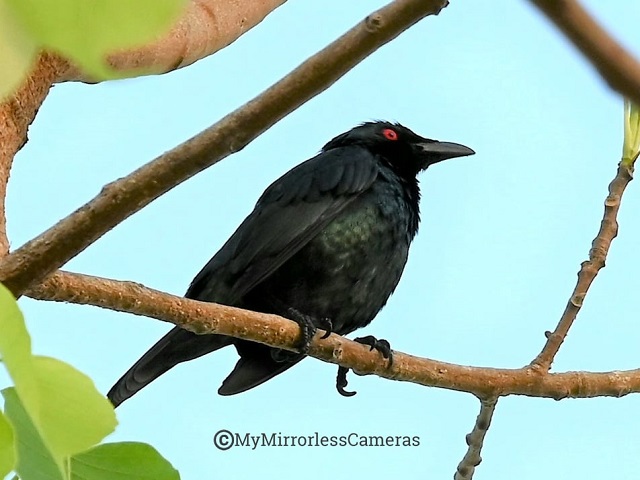
“KULANSIYANG” “GALANSIYANG” “KULING-DAGAT”
The Asian Glossy Starling (Aplonis panayensis) is a species of starling in the family Sturnidae. It is found in Bangladesh, Brunei, India, Indonesia, Malaysia, Myanmar, Philippines, Singapore, Taiwan (introduced) and Thailand.
Its natural habitats are subtropical or tropical moist lowland forest and subtropical or tropical mangrove forest. There is also a huge number of this species inhabiting towns and cities, where they take refuge in abandoned buildings and trees.
They often move in large groups and are considered one of the noisiest species of birds.
Shot 1/250 sec. f/6.3 250 mm ISO 400 Device NIKON Z50 Handheld
*Coppersmith Barbet (Psilopogon haemacephalus)
Date spotted: February 25, 2022 / Place of sighting: San Lorenzo South, Sta. Rosa City, Laguna, Philippines
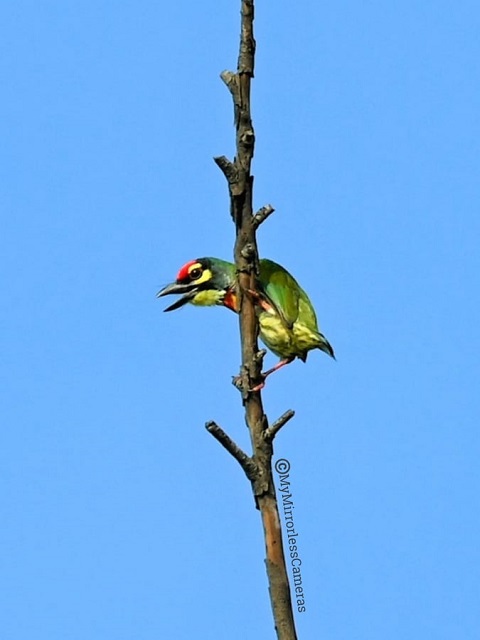
“POKPOK”
The Coppersmith Barbet (Psilopogon haemacephalus) also called crimson-breasted barbet and coppersmith, is an Asian barbet with crimson forehead and throat, known for its metronomic call that sounds similar to a coppersmith striking metal with a hammer.
It is a resident bird in the Indian subcontinent and parts of Southeast Asia. It carves out holes inside a tree to build its nest.
It is predominantly frugivorous, but has been observed eating insects, especially winged termites.
Shot 1/640 sec. f/6.3 250 mm ISO 100 Device NIKON Z50 Handheld
*Eurasian Tree Sparrow (Passer montanus)
Date spotted: February 24, 2022 / Place of sighting: San Lorenzo South, Sta. Rosa City, Laguna, Philippines
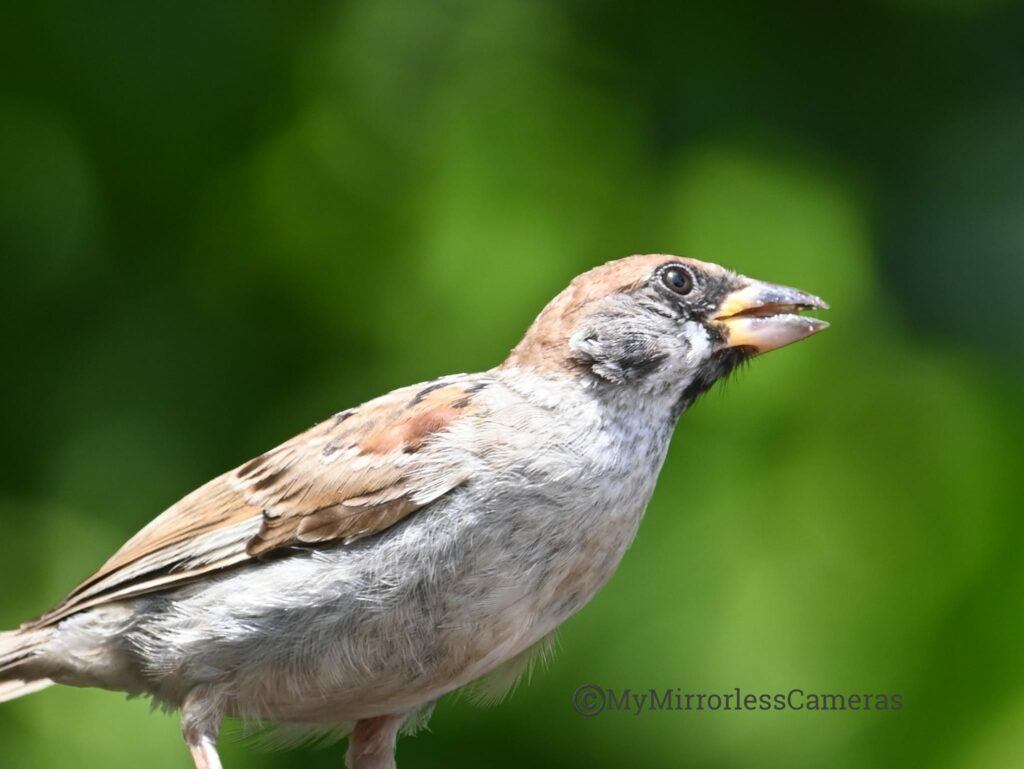
“MAYANG SIMBAHAN”
The Eurasian Tree Sparrow (Passer montanus) is a passerine bird in the sparrow family with a rich chestnut crown and nape, and a black patch on each pure white cheek.
The sexes are similarly plumaged, and young birds are a duller version of the adult. This sparrow breeds over most of temperate Eurasia and Southeast Asia, where it is known as the tree sparrow, and it has been introduced elsewhere including the United States, where it is known as the Eurasian tree sparrow or German sparrow to differentiate it from the native unrelated American tree sparrow.
Although several subspecies are recognised, the appearance of this bird varies little across its extensive range.
Shot 1/500 sec. f/6.3 250 mm ISO 360 Device NIKON Z50 Handheld
*Philippine Pygmy Woodpecker (Yungipicus maculatus)
Date spotted: January 21, 2022 / Place of sighting: San Lorenzo South, Sta. Rosa City, Laguna, Philippines
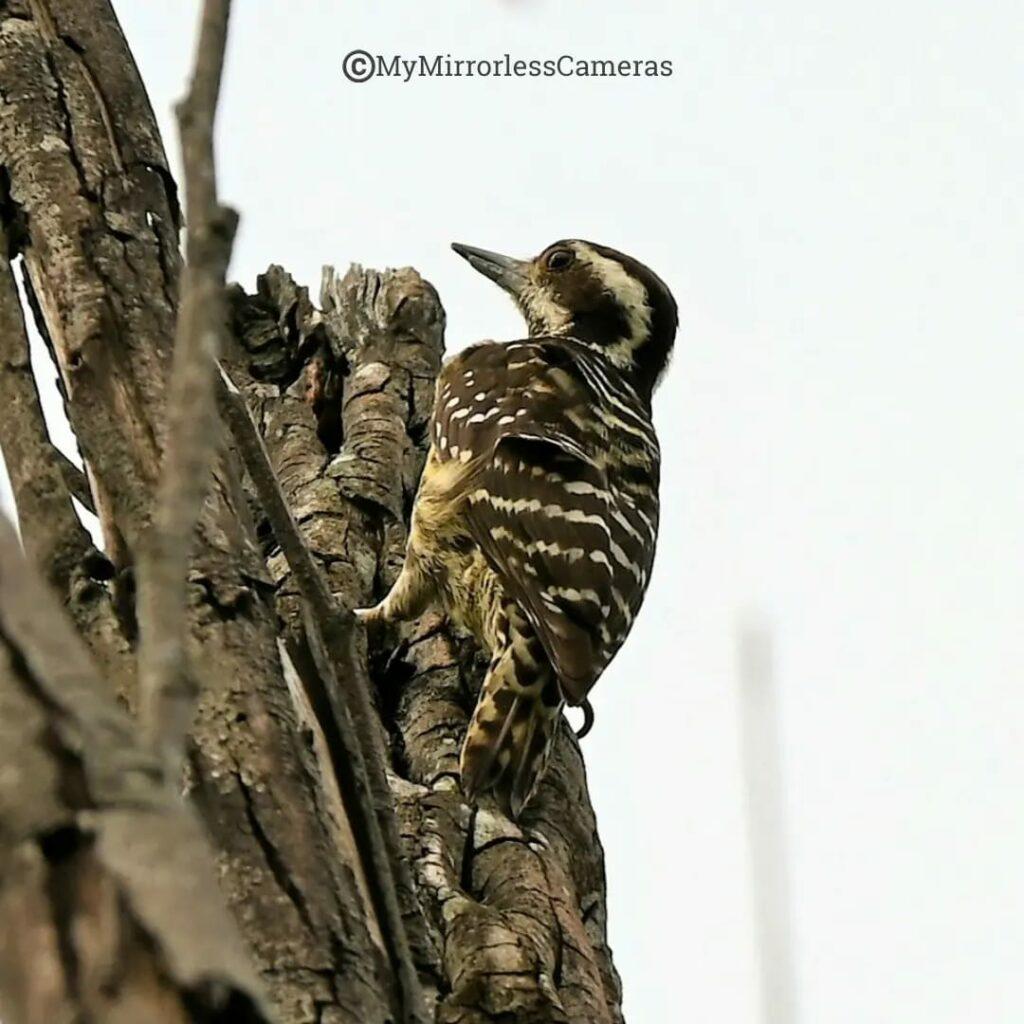
“ANLUAGE”
The Philippine Pygmy Woodpecker (Yungipicus maculatus), also known as the Philippine woodpecker, is a species of bird in the woodpecker family (Picidae).
Smallest Philippine woodpecker, sexes differ, races fall into 3 groups: group 1 validirostris, maculatus and menagei with back moderately barred with blackish-brown and white, throat white with dark spots or streaks, and rest of underparts heavily streaked black and white;…
group 2 fulvifasciatus and leytensis with back boldly barred with black and white, throat whitish, upper breast whitish with distinct black spots and rest of underparts finely slight or no barring on upperparts…
but with a large white patch on lower back and rump, complete red nuchal crest in male, narrow white throat, yellow breast faintly streaked with brown, and faintly streaked brown and buff bully.
The woodpecker is endemic to the Philippines. Its natural habitats are subtropical or tropical moist lowland forest and subtropical or tropical moist montane forest.
Shot 1/500 sec. f/6.3 250 mm ISO 100 Device NIKON Z50 Handheld
*Olive-backed Sunbird (Cinnyris jugularis)
Date spotted: December 28, 2021 / Place of sighting: Calamba City, Laguna, Philippines

“TAMSI”
The Olive-backed Sunbird (Cinnyris jugularis), also known as the Yellow-bellied Sunbird, is a species of sunbird found from Southern Asia to Australia.
It’s a wrap! Ending the year on a positive note.
Hoping for bright and prosperous 2022! ![]()
![]()
![]()
![]()
![]()
![]()
![]()
![]()
![]()
Shot 1/400 sec. f/6.3 250 mm ISO 400 Device NIKON Z50 Handheld
*Barn Swallow (Hirundo rustica)
Date spotted: December 27, 2021 / Place of sighting: Calamba City, Laguna, Philippines
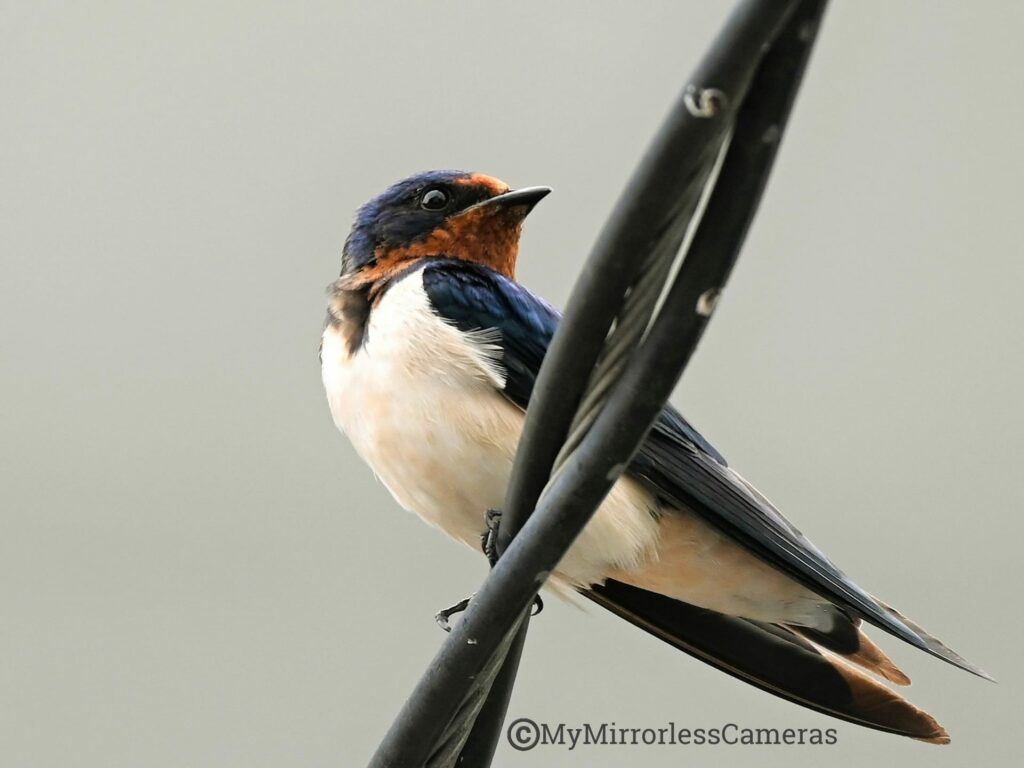
“SIBAD”
The Barn Swallow (Hirundo rustica) is the most widespread species of swallow in the world. In fact, it appears to have the largest natural distribution of any of the world’s passerine, ranging over 251 million square kilometers globally.
It is a distinctive passerine bird with blue upperparts and a long, deeply forked tail. It is found in Europe, Asia, Africa and the Americas.
In Anglophone Europe it is just called the swallow; in northern Europe it is the only common species called a “swallow” rather than a “martin”.
Shot 1/250 sec. f/6.3 250 mm ISO 400 Device NIKON Z50 Handheld
*Little Egret (Egretta garzetta)
Date spotted: November 28, 2021 / Place of sighting: LPPCHEA/LPPWP, Paranaque City, Philippines

“TAGAK”
The Little Egret (Egretta garzetta) is a species of small heron in the family Ardeidae. It is a white bird with a slender black beak, long black legs and, in the western race, yellow feet.
As an aquatic bird, it feeds in shallow water and on land, consuming a variety of small creatures.
It breeds colonially, often with other species of water birds, making a platform nest of sticks in a tree, bush or reed bed.
A clutch of three to five bluish-green eggs is laid and incubated by both parents for about three weeks. The young fledge at about six weeks of age.
Shot 1/250 sec. f/6.3 250 mm ISO 110 Device NIKON Z50 Handheld
*Arctic warbler (Phylloscopus borealis)
Date spotted: November 28, 2021 / Place of sighting: LPPCHEA/LPPWP, Paranaque City, Philippines
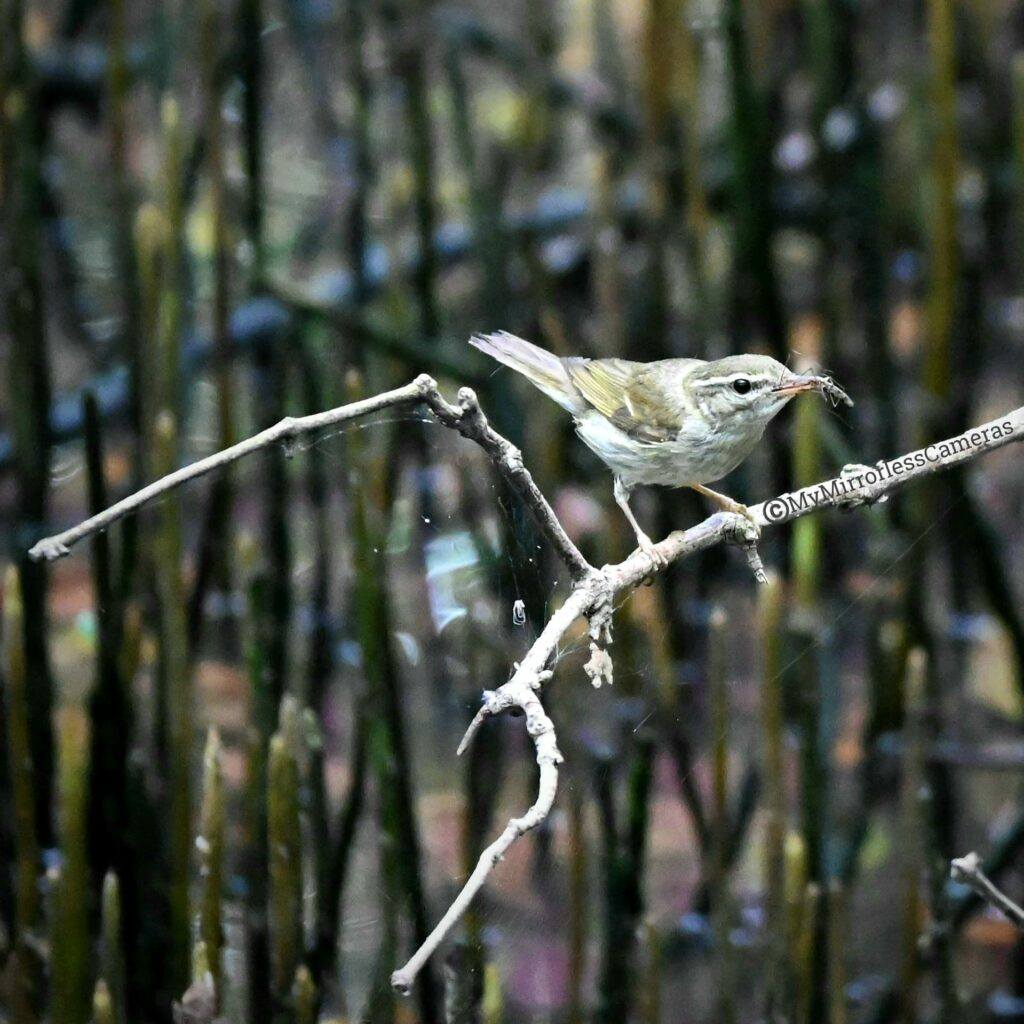
Another lifer for me w/ a catch!![]() First time to see this migratory bird!
First time to see this migratory bird!
The Arctic Warbler (Phylloscopus borealis) is a widespread leaf warbler in birch or mixed birch forest near water throughout its breeding range in Fennoscandia and the northern Palearctic. It has established a foothold in North America, breeding in Alaska.
This warbler is strongly migratory; the entire population winters in Southeast Asia. It therefore has one of the longest migrations of any Old World insectivorous bird.
Shot 1/125 sec. f/6.3 250 mm ISO 5600 Device NIKON Z50 Handheld
*Common Kingfisher (Alcedo atthis)
Date spotted: November 28, 2021 / Place of sighting: LPPCHEA/LPPWP, Paranaque City, Philippines
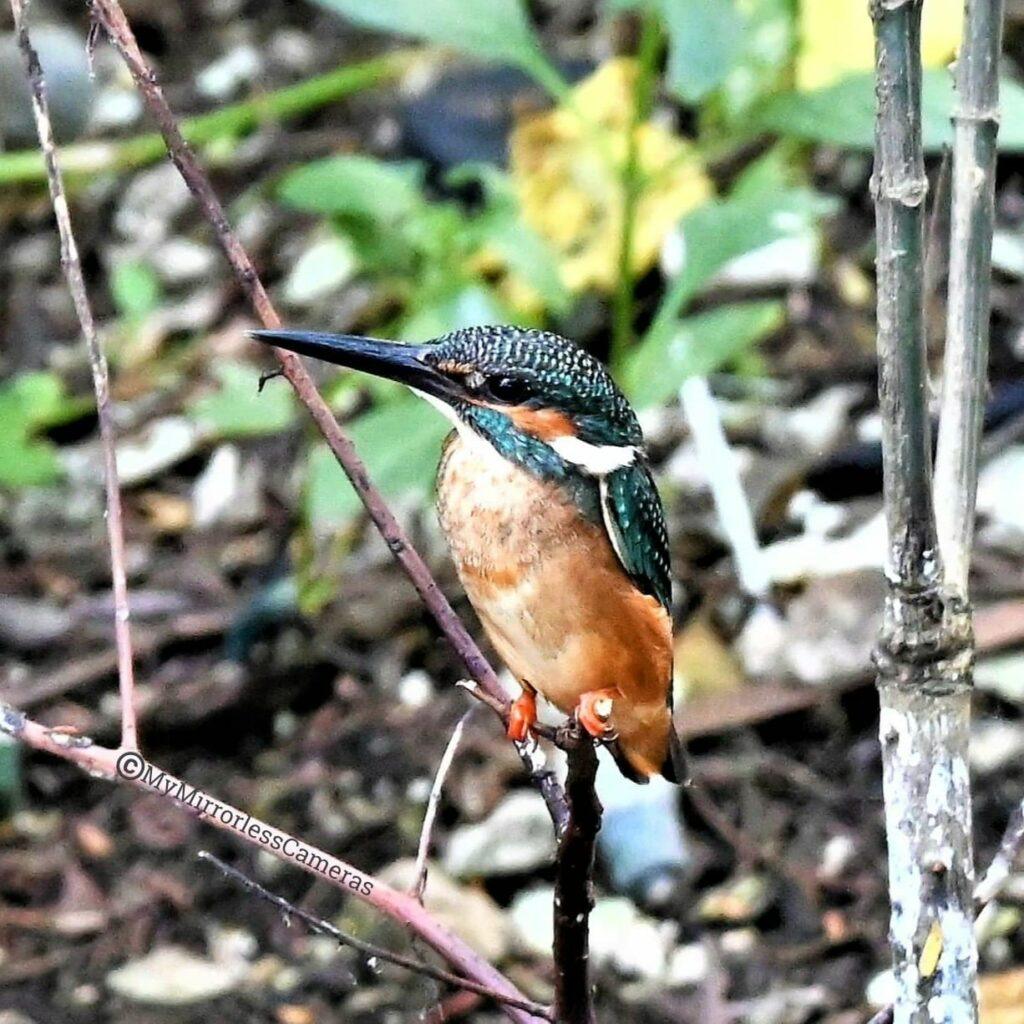
“PISKADOR” “SUSULBOT” “KASAYKASAY”
Common but not common!![]()
![]() First time to see this bird.
First time to see this bird. ![]()
“Lifer” as they called it in birding.
The Common Kingfisher (Alcedo atthis) also known as the Eurasian kingfisher and river kingfisher, is a small kingfisher with seven subspecies recognized within its wide distribution across Eurasia and North Africa.
It is resident in much of its range, but migrates from areas where rivers freeze in winter.
Shot 1/125 sec. f/6.3 250 mm ISO 3600 Device NIKON Z50 Handheld
*Pacific Golden Plover (Pluvialis fulva)
Date spotted: November 28, 2021 / Place of sighting: LPPCHEA/LPPWP, Paranaque City, Philippines
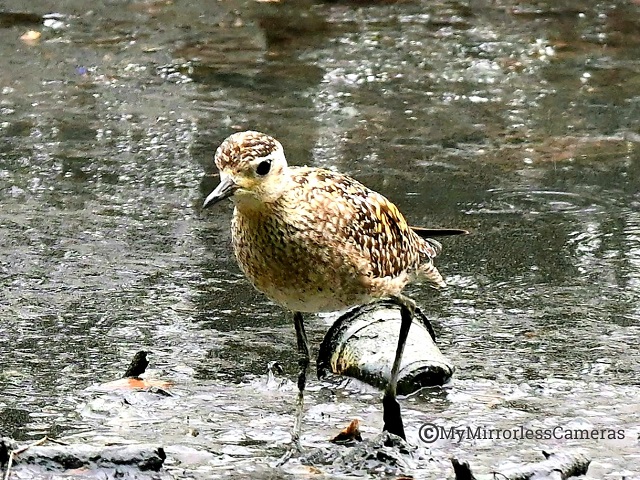
“TALINGTING”
The Pacific Golden Plover (Pluvialis fulva) is a migratory shorebird that breeds during Alaska and Siberia summers. During nonbreeding season, this medium-sized plover migrates widely across the Pacific.
The genus name is derived from pluvia, Latin for “rain”. It was once believed that golden-plovers flocked when rain was imminent.
The Latin species name fulva means tawny or yellowish-brown. In the Hawaiian language, the bird is called kōlea. The Māori of New Zealand call the bird kuriri.
Shot 1/250 sec. f/6.3 250 mm ISO 1600 Device NIKON Z50 Handheld
*Common Greenshank (Tringa nebularia)
Date spotted: November 28, 2021 / Place of sighting: LPPCHEA/LPPWP, Paranaque City, Philippines
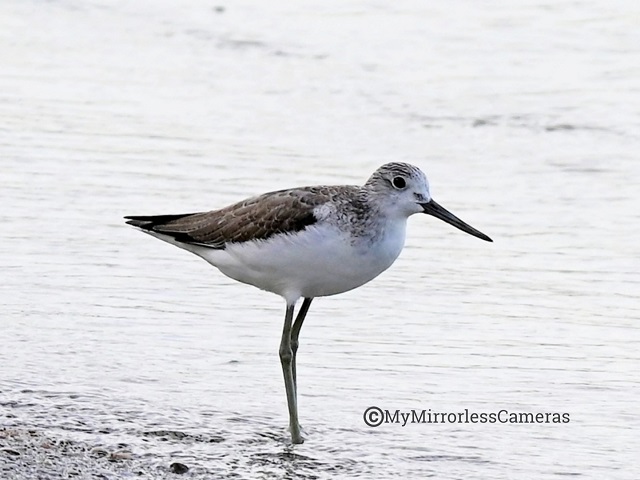
The Common Greenshank (Tringa nebularia) is a wader in the large family Scolopacidae, the typical waders.
The genus name Tringa is the New Latin name given to the green sandpiper by Aldrovandus in 1599 based on Ancient Greek trungas, a thrush-sized, white-rumped, tail-bobbing wading bird mentioned by Aristotle.
The specific nebularia is from Latin nebula “mist”. Like the Norwegian Skoddefoll, this refers to the greenshank’s damp marshy habitat.
Shot 1/500 sec. f/6.3 250 mm ISO 280 Device NIKON Z50 Handheld
*Eurasian Whimbrel (Numenius phaeopus)
Date spotted: November 28, 2021 / Place of sighting: LPPCHEA/LPPWP, Paranaque City, Philippines
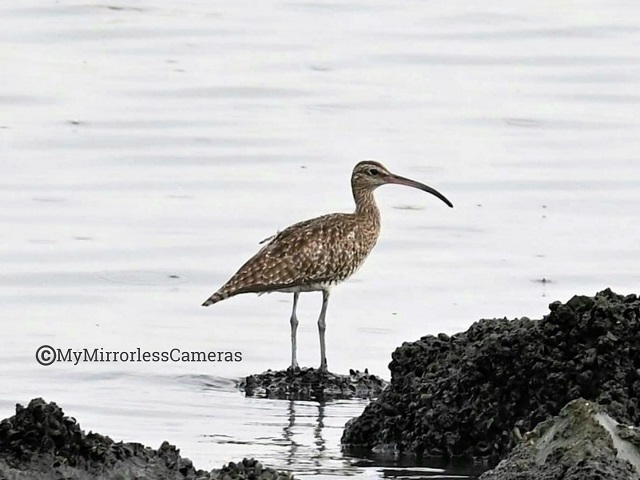
The Eurasian Whimbrel (Numenius phaeopus) is a wader in the large family Scolopacidae. It is one of the most widespread of the curlews, breeding across much of subarctic Asia and Europe as far south as Scotland.
This species and the Hudsonian whimbrel have recently been split, although some taxonomic authorities still consider them to be conspecific. It is a fairly large wader though mid-sized as a member of the curlew genus.
It is a migratory bird wintering on coasts in Africa, and South Asia into Australasia. It is also a coastal bird during migration.
It is fairly gregarious outside the breeding season. It is found in Ireland and the United Kingdom, and it breeds in Scotland, particularly around Shetland, Orkney, the Outer Hebrides as well as the mainland at Sutherland and Caithness.
Shot 1/400 sec. f/6.3 250 mm ISO 400 Device NIKON Z50 Handheld
*Great Egret (Ardea alba)
Date spotted: November 28, 2021 / Place of sighting: LPPCHEA/LPPWP, Paranaque City, Philippines

The Great Egret (Ardea alba), also known as the common egret, large egret, or (in the Old World) great white egret or great white heron is a large, widely distributed egret, with four subspecies found in Asia, Africa, the Americas, and southern Europe.
Distributed across most of the tropical and warmer temperate regions of the world, it builds tree nests in colonies close to water.
Shot 1/400 sec. f/6.3 250 mm ISO 400 Device NIKON Z50 Handheld
Stand tall, prove yourself against all odds, even in the darkest hour.
*Grey Heron (Ardea cinerea)
Date spotted: November 28, 2021 / Place of sighting: LPPCHEA/LPPWP, Paranaque City, Philippines
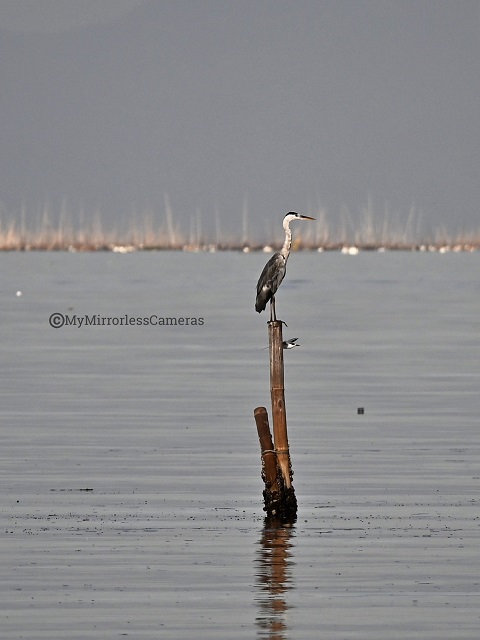
The Grey Heron (Ardea cinerea) is a long-legged predatory wading bird of the heron family, Ardeidae, native throughout temperate Europe and Asia and also parts of Africa.
It is resident in much of its range, but some populations from the more northern parts migrate southwards in autumn.
A bird of wetland areas, it can be seen around lakes, rivers, ponds, marshes and on the sea coast.
It feeds mostly on aquatic creatures which it catches after standing stationary beside or in the water or stalking its prey through the shallows.
Shot 1/640 sec. f/6.3 250 mm ISO 100 Device NIKON Z50 Handheld
*Whiskered Tern (Chlidonias hybrida)
Date spotted: November 28, 2021 / Place of sighting: LPPCHEA/LPPWP, Paranaque City, Philippines
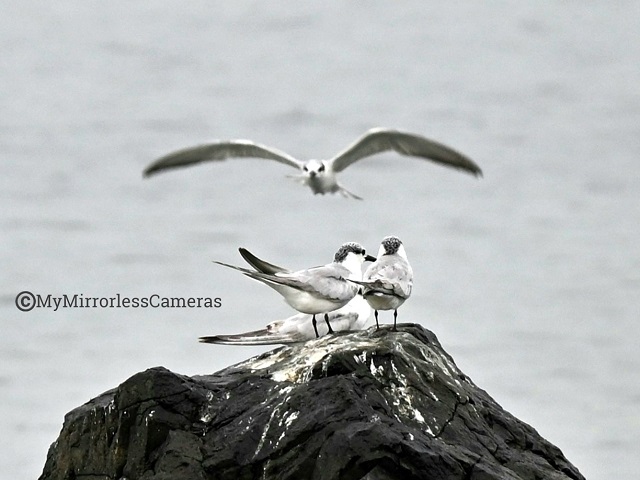
The Whiskered Tern (Chlidonias hybrida) is a tern in the family Laridae. The genus name is from Ancient Greek khelidonios, “swallow-like”, from khelidon, “swallow”.
The specific hybridus is Latin for hybrid; Pallas thought it might be a hybrid of white-winged black tern and common tern, writing “Sterna fissipes [Chlidonias leucopterus] et Hirundine [Sterna hirundo] natam”.
This bird has a number of geographical races, differing mainly in size and minor plumage details.
Shot 1/500 sec. f/6.3 250 mm ISO 400 Device NIKON Z50 Handheld
*Grey-tailed Tattler or Polynesian Tattler (Tringa brevipes)
Date spotted: November 28, 2021 / Place of sighting: LPPCHEA/LPPWP, Paranaque City, Philippines
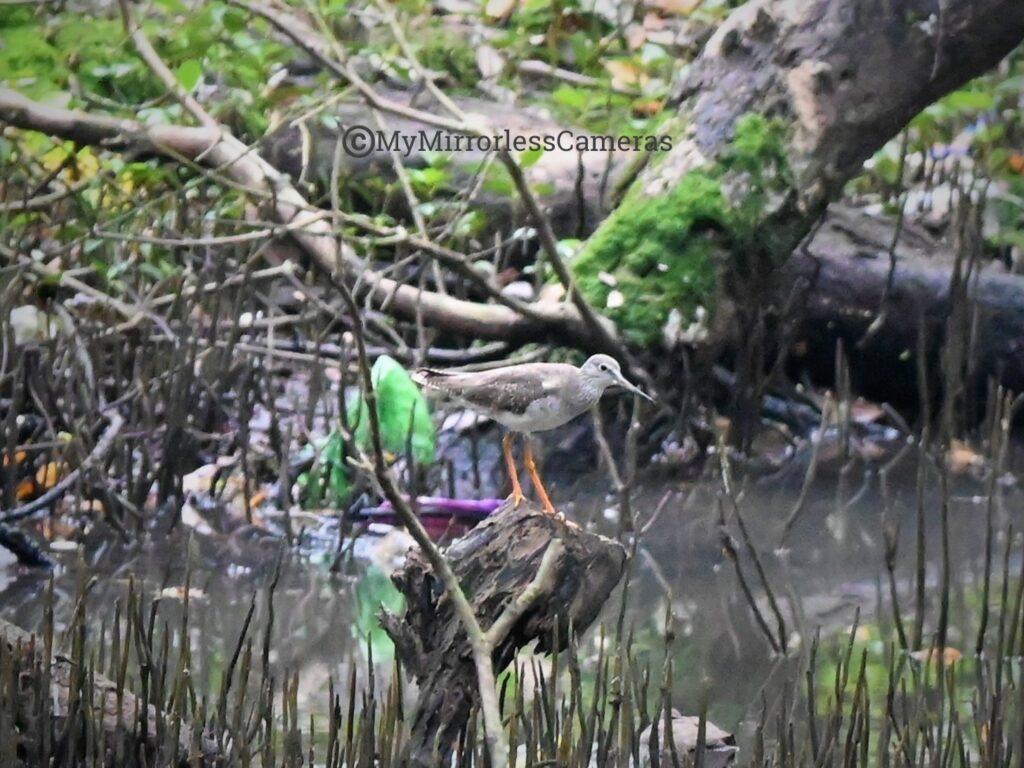
The Grey-tailed Tattler or Polynesian Tattler, Tringa brevipes (formerly Heteroscelus brevipes) is a small, foraging shorebird in the genus Tringa.
It is said that the English name for the tattlers refers to their noisy call.
The genus name Tringa is the New Latin name given to the green sandpiper by Aldrovandus in 1599 based on Ancient Greek trungas, a thrush-sized, white-rumped, tail-bobbing wading bird mentioned by Aristotle.
The specific brevipes is from Latin brevis, “short”, and pes, “foot”.
Shot 1/125 sec. f/6.3 250 mm ISO 5000 Device NIKON Z50 Handheld
Sad to note the garbage around the area.
*Striated Heron (Butorides striata)
Date spotted: November 28, 2021 / Place of sighting: LPPCHEA/LPPWP, Paranaque City, Philippines
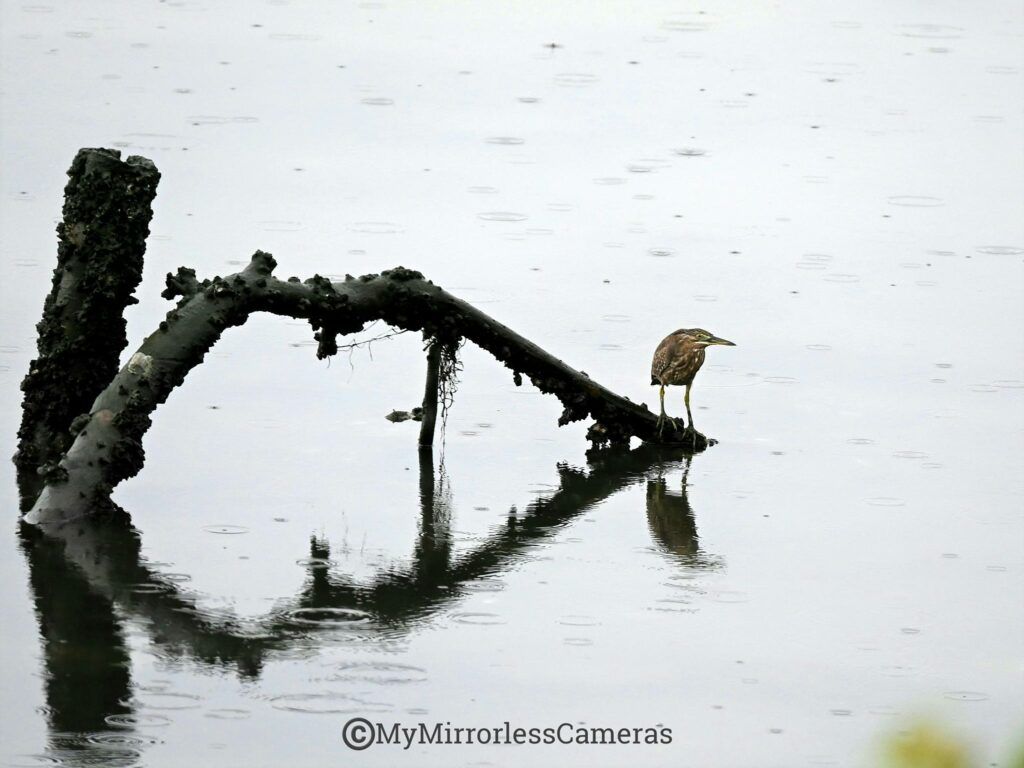
The Striated Heron (Butorides striata) also known as mangrove heron, little heron or green-backed heron, is a small heron, about 44 cm tall. Striated herons are mostly non-migratory and noted for some interesting behavioral traits.
Their breeding habitat is small wetlands in the Old World tropics from west Africa to Japan and Australia and in South America and the Caribbean.
Vagrants have been recorded on Oceanic islands, such as Chuuk and Yap in the Federated States of Micronesia, the Marianas, and Palau; the bird recorded on Yap on February 25, 1991, was from a continental Asian rather than from a Melanesian population, while the origin of the bird seen on Palau on May 3, 2005, was not clear.
Shot 1/500 sec. f/6 230 mm ISO 360 Device NIKON Z50 Handheld
No matter how gloomy the morning is, anything is possible in a new day.
*White-breasted Woodswallow (Artamus leucorynchus)
Date spotted: November 12, 2021 / Place of sighting: Tagaytay City, Cavite, Philippines
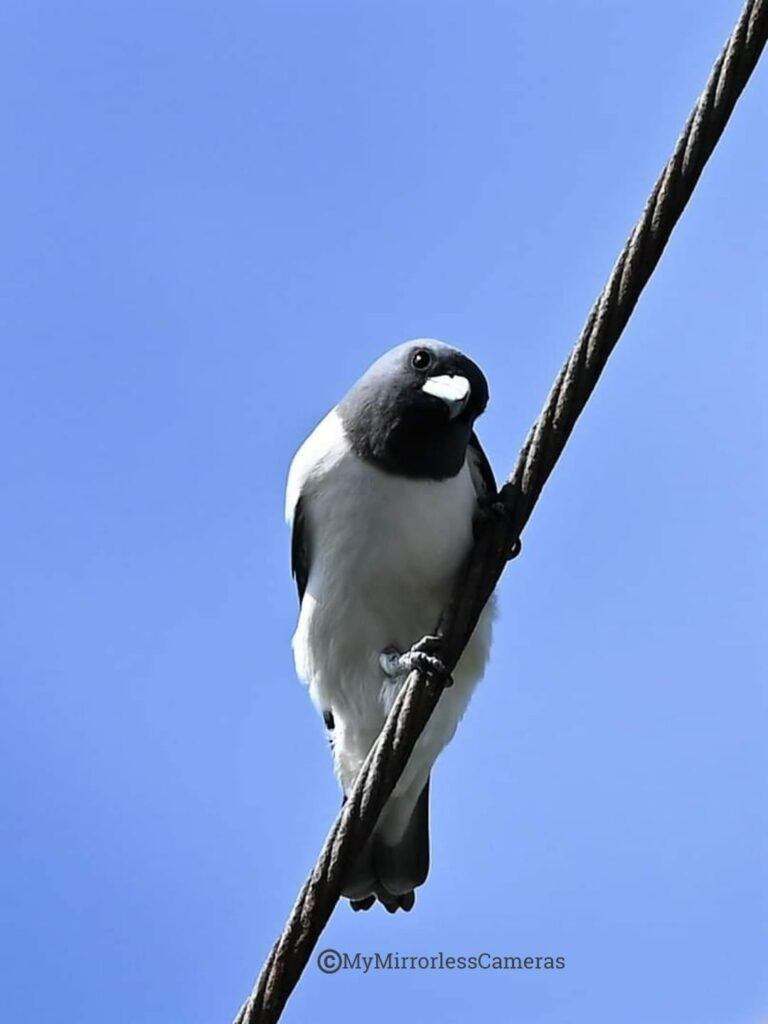
“GITGIT” “GIKGIK” “PAGATPAT”
The White-breasted Woodswallow (Artamus leucorynchus) is a medium-sized passerine bird that breeds from the Andaman Islands east through Indonesia and northern Australia.
The name “woodswallow” is a misnomer as they are not closely related to true swallows.
Shot 1/500 sec. f/6.3 250 mm ISO 100 Device NIKON Z50 Handheld
*Long-tailed Shrike (Lanius schach)
Date spotted: November 12, 2021 / Place of sighting: Tagaytay City, Cavite, Philippines
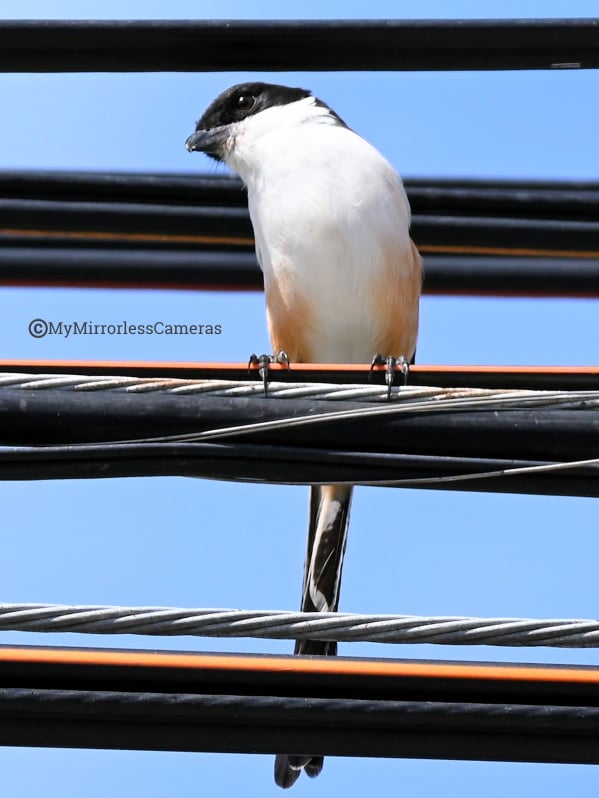
“TARAT” “PAKISKIS”
The Long-tailed Shrike or Rufous-backed Shrike (Lanius schach) is a member of the bird family Laniidae, the shrikes.
They are found widely distributed across Asia and there are variations in plumage across the range.
Shot 1/640sec. f/6.3 250mm ISO 100 Device Nikon Z50 Handheld
*Zebra Dove (Geopelia striata)
Date spotted: November 7, 2021 / Place of sighting: San Lorenzo South, Sta. Rosa City, Laguna, Philippines
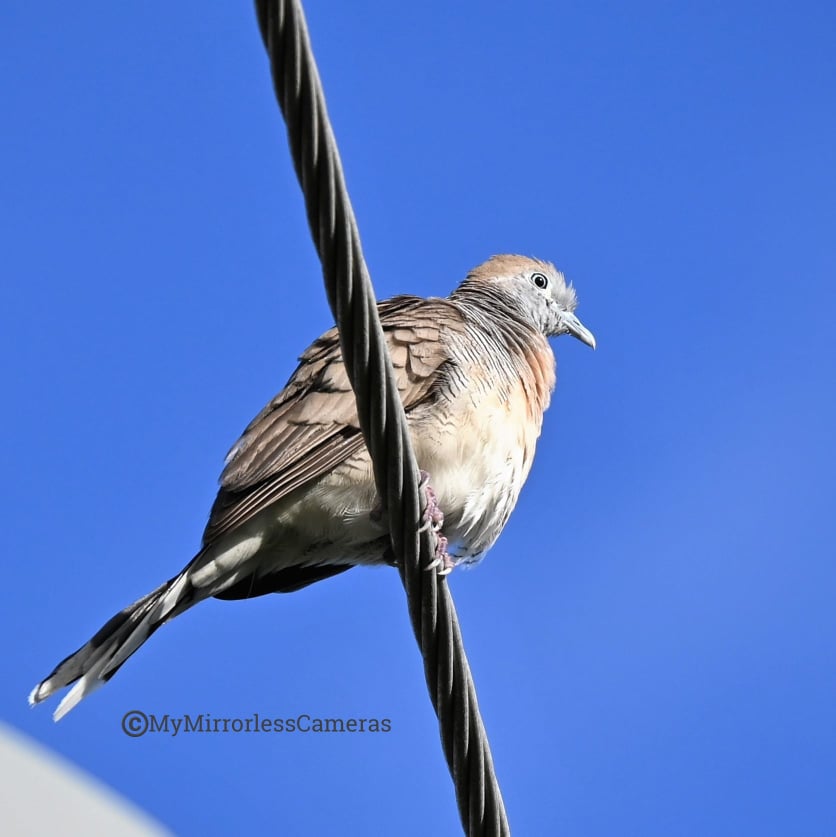
“KURUKOTOK” “BATOBATONG KATIGBE”
The Zebra Dove (Geopelia striata) also known as the barred ground dove, or barred dove, is a species of bird of the dove family, Columbidae, native to Southeast Asia.
They are small birds with a long tail, predominantly brownish-grey in colour with black-and-white barring. The species is known for its pleasant, soft, staccato cooing calls.
Shot 1/500 sec. f/6.3 250 mm ISO 160 Device Nikon Z50 Handheld
“We must possess the toughness of the serpent along with the softness of the dove. We must have a strong mind and a tender heart.”
*Warbling White-eye (Zosterops japonicus)
Date spotted: November 4, 2021 / Place of sighting: San Lorenzo South, Sta. Rosa City, Laguna, Philippines
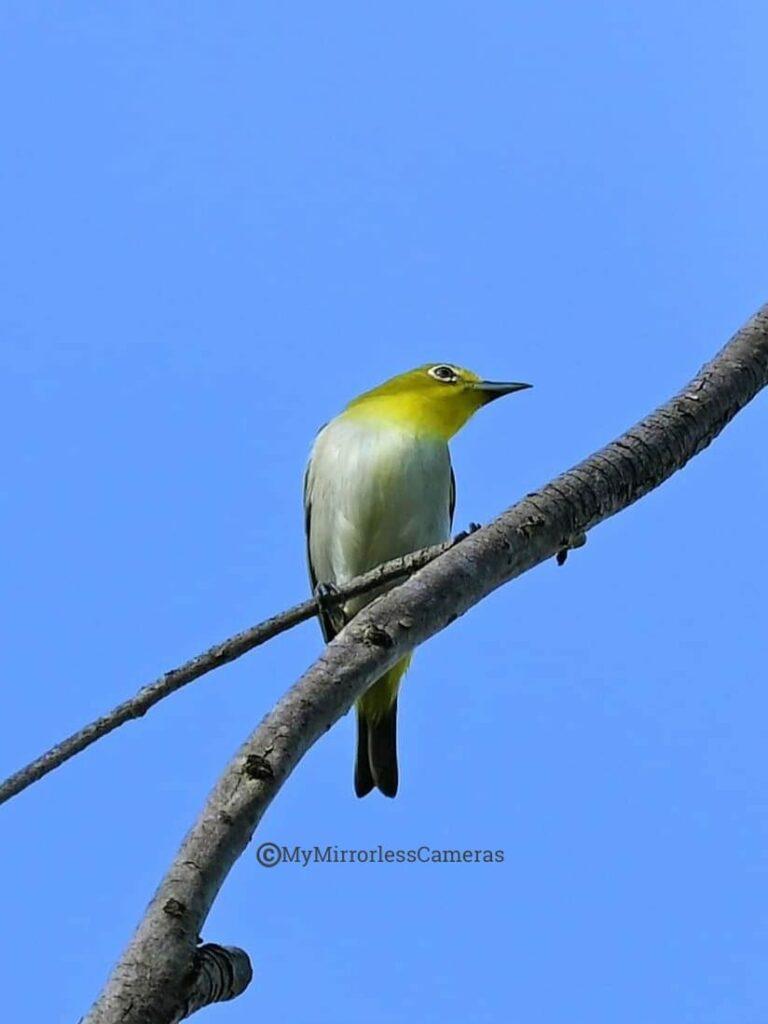
The Warbling White-eye (Zosterops japonicus), also known as the Japanese white-eye and mountain white-eye, is a small passerine bird in the white-eye family.
The specific epithet is occasionally written japonica, but this is incorrect due to the gender of the genus. Its native range includes much of East Asia, including the Russian Far East, Japan, Indonesia, Korea, and the Philippines.
It has been intentionally introduced to other parts of the world as a pet and as pest control, with mixed results. As one of the native species of the Japanese islands, it has been depicted in Japanese art on numerous occasions, and historically was kept as a cage bird.
Shot 1/500 sec. f/6.3 250 mm ISO 140 Device Nikon Z50 Handheld
*Bull-headed Shrike (Lanius bucephalus)
Date spotted: October 23, 2021 / Place of sighting: San Lorenzo South, Sta. Rosa City, Laguna, Philippines
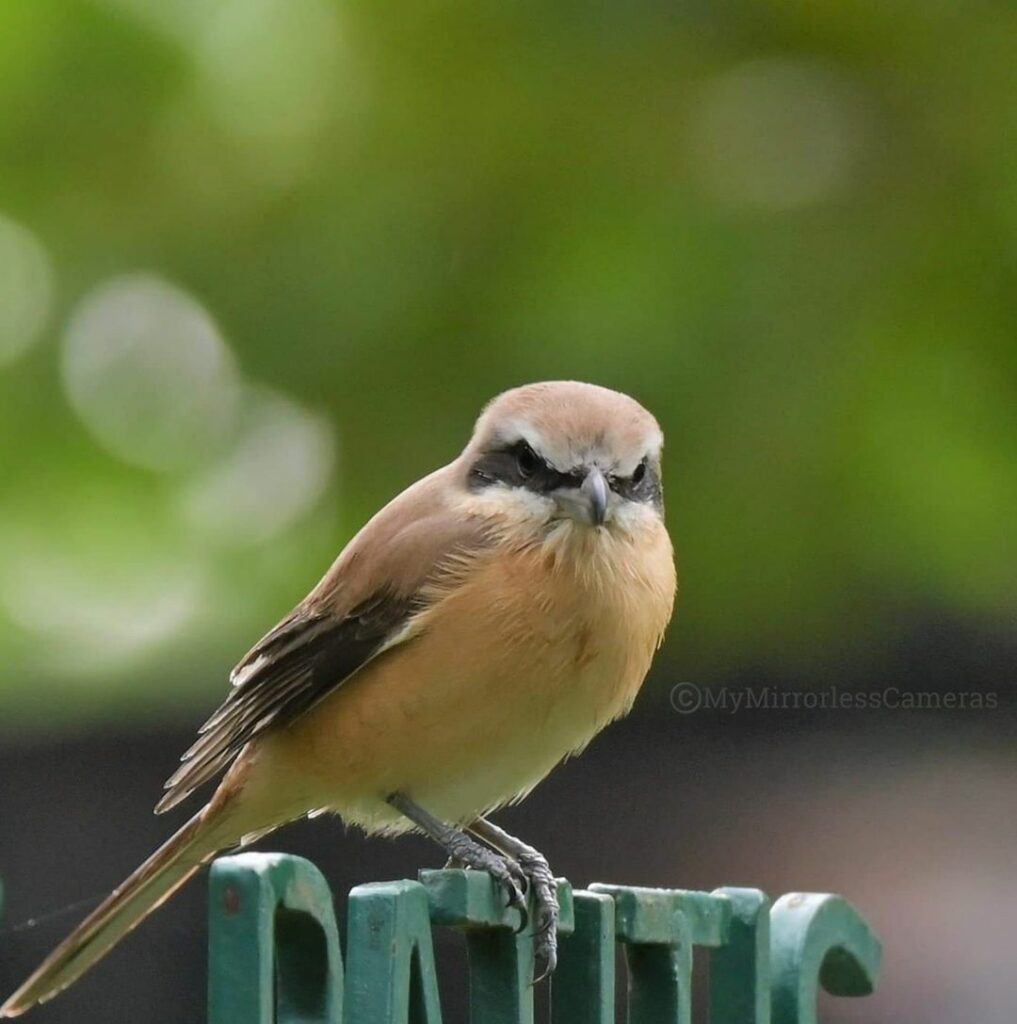
“TARAT” “PAKISKIS”
The Bull-headed Shrike (Lanius bucephalus) is a passerine bird of Eastern Asia belonging to the shrike family Laniidae. It is 19–20 cm long. The male has a brown crown, white eyebrow, and black mask. The back is grey-brown while the wings are dark with a white patch.
Shot 1/160 sec. f/6.3 250 mm ISO 400 Device Nikon Z50 Handheld
“Oftentimes we are angry at the faults of others and we carried it into our hearts for too long. We punish ourselves for the mistakes of others. #angrybird“
*Brown Shrike (Lanius cristatus)
Date spotted: September 19, 2021 / Place of sighting: San Lorenzo South, Sta. Rosa City, Laguna, Philippines

“TARAT” “PAKISKIS”
The Brown Shrike (Lanius cristatus) is a bird in the shrike family that is found mainly in Asia.
It is closely related to the red-backed shrike and isabelline shrike. The genus name, Lanius, is derived from the Latin word for “butcher”, and some shrikes are also known as “butcher birds” because of their feeding habits.
Like most other shrikes, it has a distinctive black “bandit-mask” through the eye.
Shot 1/250 sec. f/6.3 250 mm ISO 800 Device Nikon Z50 Handheld
*Yellow-vented Bulbul (Pycnonotus goiavier)
Date spotted: September 13, 2021 / Place of sighting: San Lorenzo South, Sta. Rosa City, Laguna, Philippines

“PURAK” “LUKLAK”
The Yellow-vented Bulbul (Pycnonotus goiavier) or Eastern Yellow-vented Bulbul is a member of the bulbul family of passerine birds.
It is a resident breeder in southeastern Asia from Indochina to the Philippines. It is found in a wide variety of open habitats but not the deep forest.
Shot 1/320 sec. f/6 250 mm ISO 400 Device Nikon Z50 Handheld
*Chestnut Munia or Black-headed Munia (Lonchura atricapilla)
Date spotted: September 3, 2021 / Place of sighting: San Lorenzo South, Sta. Rosa City, Laguna, Philippines
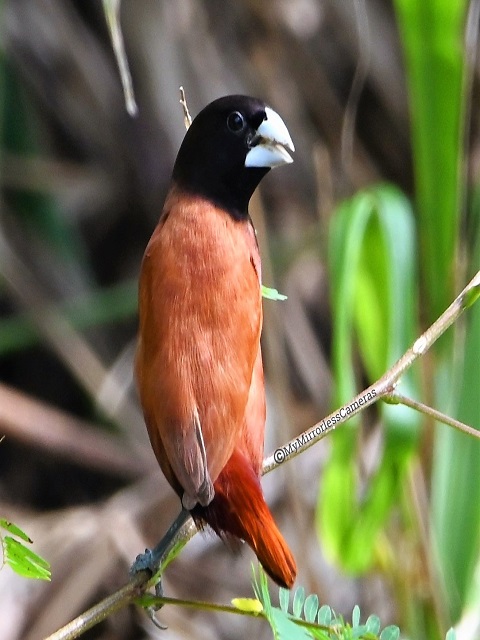
“MAYANG PULA”
The Chestnut Munia or Black-headed Munia (Lonchura atricapilla) is a small passerine. It was formerly considered conspecific with the closely related tricolored munia, but is now widely recognized as a separate species.
This estrildid finch is a resident breeding bird in Bangladesh, Brunei, Cambodia, China, India, Indonesia, Laos, Malaysia, Burma, Nepal, the Philippines, Singapore, Taiwan, Thailand, Vietnam and Hawaii. It also has been introduced to all the Great Antilles and Martinique in the Caribbean.
Before 1995, it was the national bird of the Philippines, where it is known as mayang pula (“red maya”) because of its brick red patch on the lower back which is visible only when it flies. (This distinguishes it from other birds locally called maya, notably the predominantly brownish “mayang simbahan” (tree sparrow) which is more common in urban areas.)
Shot 1/500 sec. f/6.3 250 mm ISO 400 Device Nikon Z50 Handheld
*Blue-tailed Bee-eater (Merops philippinus)
Date spotted: August 17, 2021 / Place of sighting: San Lorenzo South, Sta. Rosa City, Laguna, Philippines
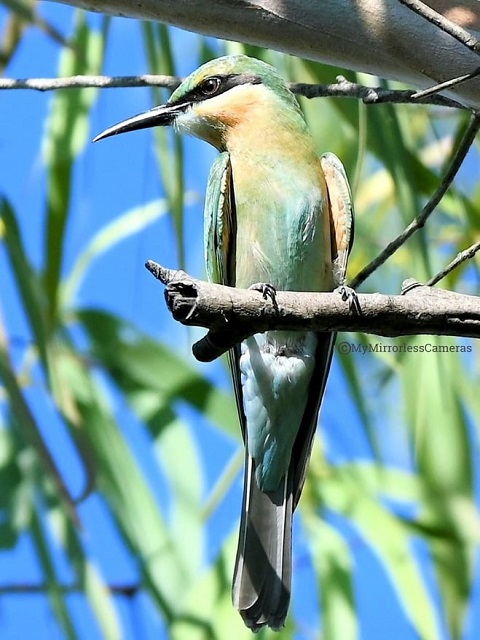
“MANUNUBING”
The Blue-tailed Bee-eater (Merops philippinus) is a near passerine bird in the bee-eater family Meropidae.
It is widely distributed across South and Southeast Asia where many populations are strongly migratory, and seen seasonally in many parts but breeding colonially in small areas across their range, mostly in river valleys, where the nest by tunneling into loamy sand banks.
This species has sometimes been considered to be conspecific with the blue-cheeked bee-eater which is a close sister taxon, the two forming a clade with the Madagascan olive bee-eater.
Shot 1/500 sec. f/6.3 250 mm ISO 220 Device Nikon Z50 Handheld
*Red-keeled Flowerpecker or Red-striped Flowerpecker (Dicaeum australe)
Date spotted: July 16, 2021 / Place of sighting: San Lorenzo South, Sta. Rosa City, Laguna, Philippines

“MANSIW” “TIP-TIP” “PIPIT”
The Red-keeled Flowerpecker or Red-striped Flowerpecker (Dicaeum australe) is a species of bird in the family Dicaeidae.
It is endemic to the Philippines. Its natural habitat is subtropical or tropical moist lowland forests.
The black-belted flowerpecker (D. haematostictum) was formerly regarded as a subspecies of this bird.
Shot 1/800 sec. f/8 250 mm ISO 100 Device Nikon Z50 Handheld
*Philippine Pied Fantail (Rhipidura nigritorquis)
Date spotted: July 16, 2021 / Place of sighting: San Lorenzo South, Sta. Rosa City, Laguna, Philippines
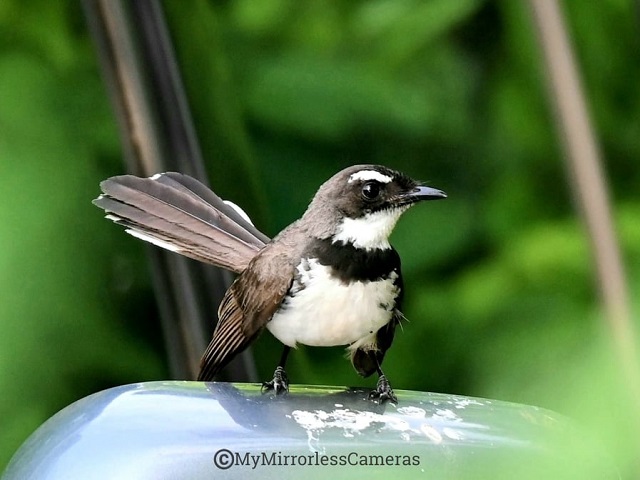
“MARIA CAPRA” “TAREREKOY”
The Philippine Pied Fantail (Rhipidura nigritorquis) is a species of bird in the family Rhipiduridae. It was formerly considered conspecific with the Malaysian pied fantail.
Its natural habitat is subtropical or tropical moist lowland forests.
It is common to the Philippines, mostly in the Mindanao and raises its tail to attract females. They are mostly black and white in color and normal in shape. It flies together/commonly with Eurasian tree sparrows and chestnut munias.
Shot 1/400 sec. f/6.3 250 mm ISO 400 Device Nikon Z50 Handheld
*(Immature) Asian Glossy Starling (Aplonis panayensis)
Date spotted: June 25, 2021 / Place of sighting: San Lorenzo South, Sta. Rosa City, Laguna, Philippines

“KULANSIYANG” “GALANSIYANG” “KULING-DAGAT”
The Asian Glossy Starling (Aplonis panayensis) is a species of starling in the family Sturnidae. It is found in Bangladesh, Brunei, India, Indonesia, Malaysia, Myanmar, Philippines, Singapore, Taiwan (introduced) and Thailand.
Its natural habitats are subtropical or tropical moist lowland forest and subtropical or tropical mangrove forest. There is also a huge number of this species inhabiting towns and cities, where they take refuge in abandoned buildings and trees.
They often move in large groups and are considered one of the noisiest species of birds.
Shot 1/500 sec. f/6.3 250 mm ISO 160 Device Nikon Z50 Handheld
*Brown-breasted Kingfisher (Halcyon gularis)
Date spotted: June 12, 2021 / Place of sighting: Cavinti, Laguna, Philippines
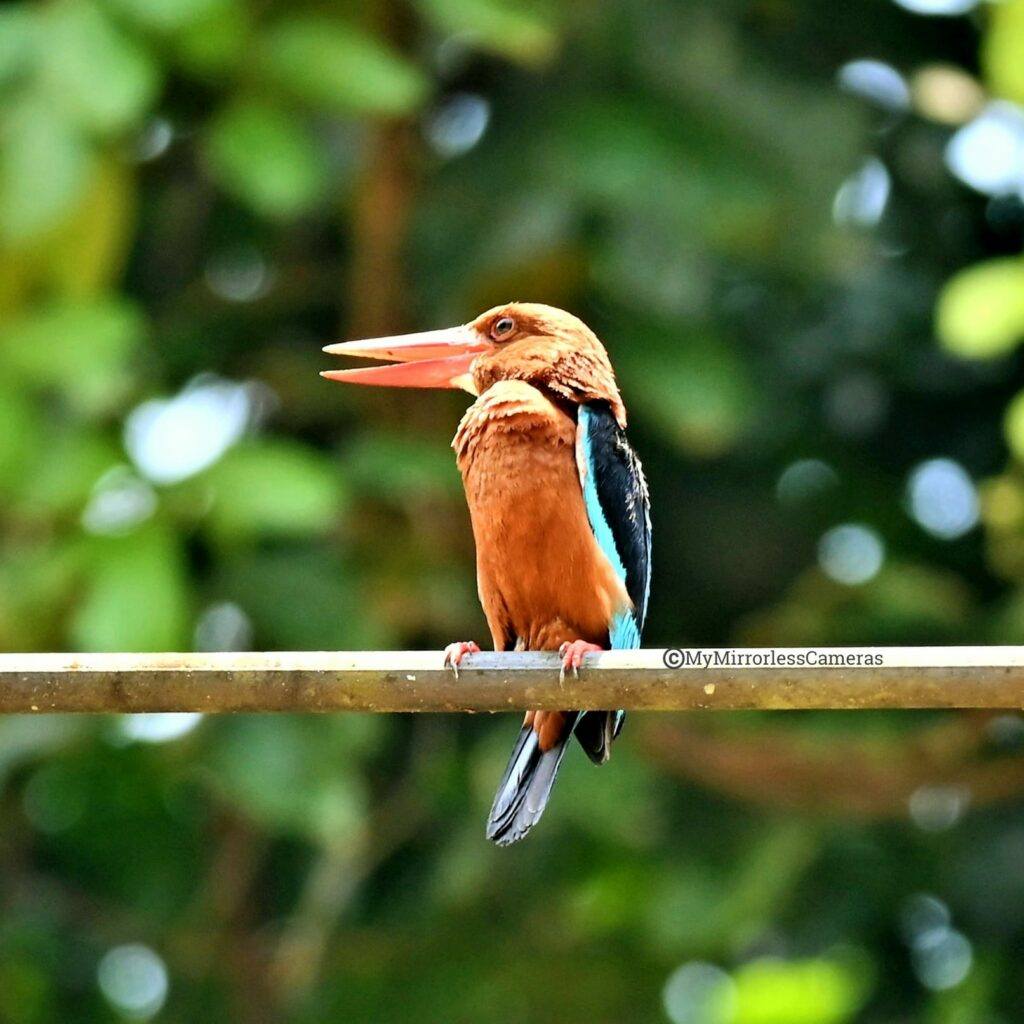
“PISKADOR” “SUSULBOT” “KASAYKASAY”
The Brown-breasted Kingfisher (Halcyon gularis) is a tree kingfisher endemic to the Philippines, where it is widely distributed. This kingfisher is a resident over much of its range.
It was previously considered a subspecies of the white-throated kingfisher (H. smyrnensis), but was split as a distinct species by the IUCN Red List and BirdLife International in 2014, and the International Ornithological Congress followed suit in 2022.
Shot 1/250 sec. f/6.3 250 mm ISO 400 Device Nikon Z50 Handheld
*Pacific Swallow (Hirundo tahitica)
Date spotted: June 12, 2021 / Place of sighting: BLOC Camp Site, Cavinti, Laguna, Philippines

“LAYANG-LAYANG”
The Pacific Swallow (Hirundo tahitica) is a small passerine bird in the swallow family. It breeds in tropical southern Asia and the islands of the south Pacific.
It is resident apart from some local seasonal movements. This bird is associated with coasts, but is increasingly spreading to forested uplands. The hill swallow was formerly considered conspecific.
Shot 1/500 sec. f/6.3 250 mm ISO 110 Device Nikon Z50 Handheld
*Crested Myna (Acridotheres cristatellus)
Date spotted: June 11, 2021 / Place of sighting: BLOC Camp Site, Cavinti, Laguna, Philippines
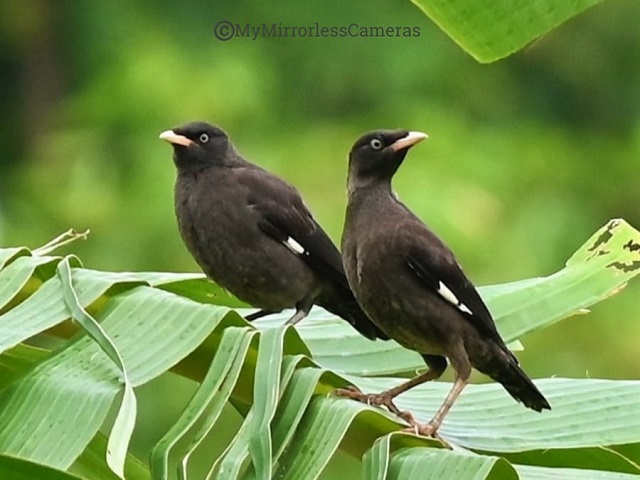
“MARTINES”
The Crested Myna (Acridotheres cristatellus), also known as the Chinese starling, is a species of starling in the genus Acridotheres native to southeastern China and Indochina. It is named after the tuft of feathers on its forehead that resembles a crest.
The crested myna is typically found in open spaces near urban and agricultural areas. It is a popular cage bird and, as a result, has been accidentally released in a few places outside of its usual range.
For example, this species was introduced around 1890 into the Vancouver region of British Columbia. It was initially successful, reaching a population in the thousands, however, it has since then gone locally extinct in the area.
Like many starlings, the crested myna is omnivorous. It will eat a variety of food including worms, grubs, grains, fruit, and even garbage. It is a highly beneficial bird to farmers, as it feeds on insects and does not attack crops.
Shot 1/250 sec. f/6.3 250 mm ISO 400 Device Nikon Z50 Handheld
*Juvenile Black-crowned Night Heron (Nycticorax nycticorax)
Date spotted: June 11, 2021 / Place of sighting: BLOC Camp Site, Cavinti, Laguna, Philippines
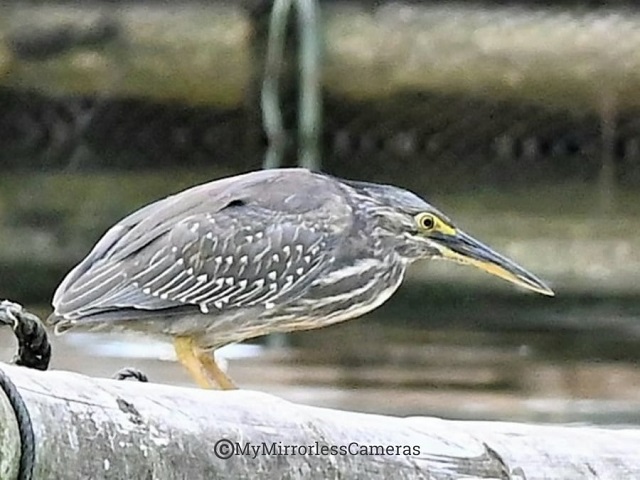
“BAKAW”
The Black-crowned Night Heron (Nycticorax nycticorax), or black-capped night heron, commonly shortened to just night heron in Eurasia, is a medium-sized heron found throughout a large part of the world, including parts of Europe, Asia, and North and South America.
In Australasia it is replaced by the closely related nankeen night heron, with which it has hybridized in the area of contact.
Shot 1/250 sec. f/6.3 250 mm ISO 1000 Device Nikon Z50 Handheld
*Rough-crested Malkoha (Dasylophus superciliosus)
Date spotted: December 26, 2020 / Place of sighting: Canyon Cove, Nasugbu, Batangas, Philippines
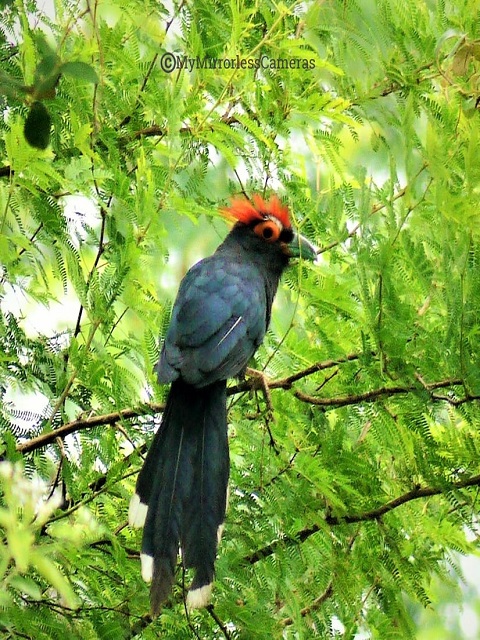
“DARING-DARINGAN” “ANTYOK”
The Rough-crested Malkoha (Dasylophus superciliosus) is a species of cuckoo in the family Cuculidae. It is endemic to Luzon Island in the Philippines. Its natural habitat is tropical moist lowland forest.
Large, with long tail and unique crest, sexes similar, races differ in that cagayanensis is smaller with less extensive and shorter superciliary crest and with olive wash on underparts compared to superciliosus.
And upperparts, wings, and tail black with bluish green gloss; superciliary or eyebrow composed of long, loosely webbed red feathers running from lores to nape; graduated tail feathers tipped white; underparts black with dull greenish tinge.
Shot 1/200 sec. f/5.6 200 mm ISO 400 Device Lumix GF2 Handheld
*Male Pied Bush Chat (Saxicola caprata)
Date spotted: December 26, 2020 / Place of sighting: Canyon Cove, Nasugbu, Batangas, Philippines

“SILOY” “TAING BABOY”
The Pied Bush Chat (Saxicola caprata) is a small passerine bird found ranging from West Asia and Central Asia to the Indian subcontinent and Southeast Asia.
About sixteen subspecies are recognized through its wide range with many island forms. It is a familiar bird of countryside and open scrub or grassland where it is found perched at the top of short thorn trees or other shrubs, looking out for insect prey.
They pick up insects mainly from the ground, and were, like other chats, placed in the thrush family Turdidae, but are now considered as Old World flycatchers.
Shot 1/400 sec. f/5.6 200 mm ISO 250 Device Lumix GF2 Handheld
*Female Pied Bush Chat (Saxicola caprata)
Date spotted: December 26, 2020 / Place of sighting: Nasugbu, Batangas, Philippines

“SILOY” “TAING BABOY”
The Pied Bush Chat (Saxicola caprata) is a small passerine bird found ranging from West Asia and Central Asia to the Indian subcontinent and Southeast Asia.
About sixteen subspecies are recognized through its wide range with many island forms. It is a familiar bird of countryside and open scrub or grassland where it is found perched at the top of short thorn trees or other shrubs, looking out for insect prey.
They pick up insects mainly from the ground, and were, like other chats, placed in the thrush family Turdidae, but are now considered as Old World flycatchers.
Shot 1/400 sec. f/5.6 200 mm ISO 400 Device Lumix GF2 Handheld
*Collared Kingfisher (Todiramphus chloris)
Date spotted: October 15, 2020 / Place of sighting: San Lorenzo South, Sta. Rosa City, Laguna, Philippines
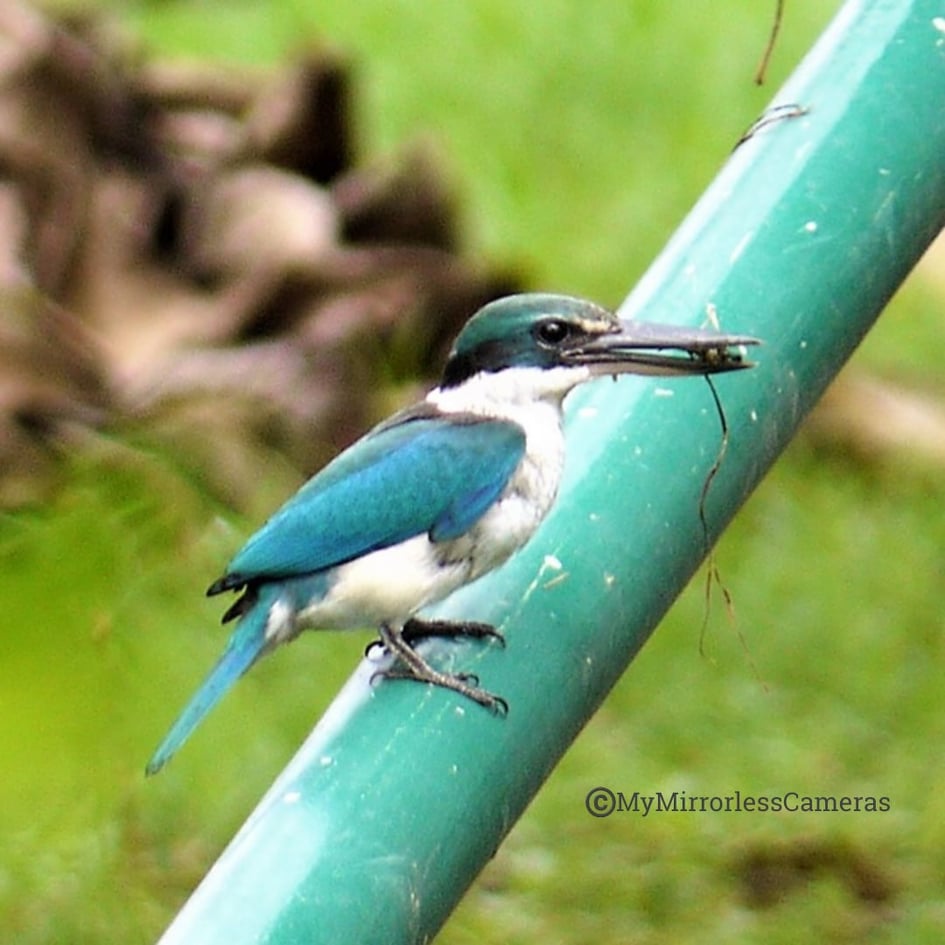
“KASAYKASAY” “SALAKSAK”
The Collared Kingfisher (Todiramphus chloris) is a medium-sized kingfisher belonging to the subfamily Halcyoninae, the tree kingfishers.
It is also known as the white-collared kingfisher or mangrove kingfisher. It has a wide range extending from the Red Sea across southern Asia to Polynesia.
A number of subspecies and subspecies groups have been split from this species including the Pacific kingfisher, the islet kingfisher, the Torresian kingfisher, the Mariana kingfisher, and the Melanesian kingfisher.
Shot 1/400 sec. f/5.6 200 mm ISO 160 Device Lumix GF2 Handheld
*Pied Triller (Lalage nigra)
Date spotted: September 14, 2020 / Place of sighting: San Lorenzo South, Sta. Rosa City, Laguna, Philippines

“KACHAK”
The Pied Triller (Lalage nigra) is a species of bird in the family Campephagidae.
It is found in Brunei, India, Indonesia, Malaysia, the Philippines, Singapore, and Thailand.
Shot 1/400 sec. f/5.6 200 mm ISO 100 Device Lumix GF2 Handheld
References (Birds scientific names): Wikipedia

